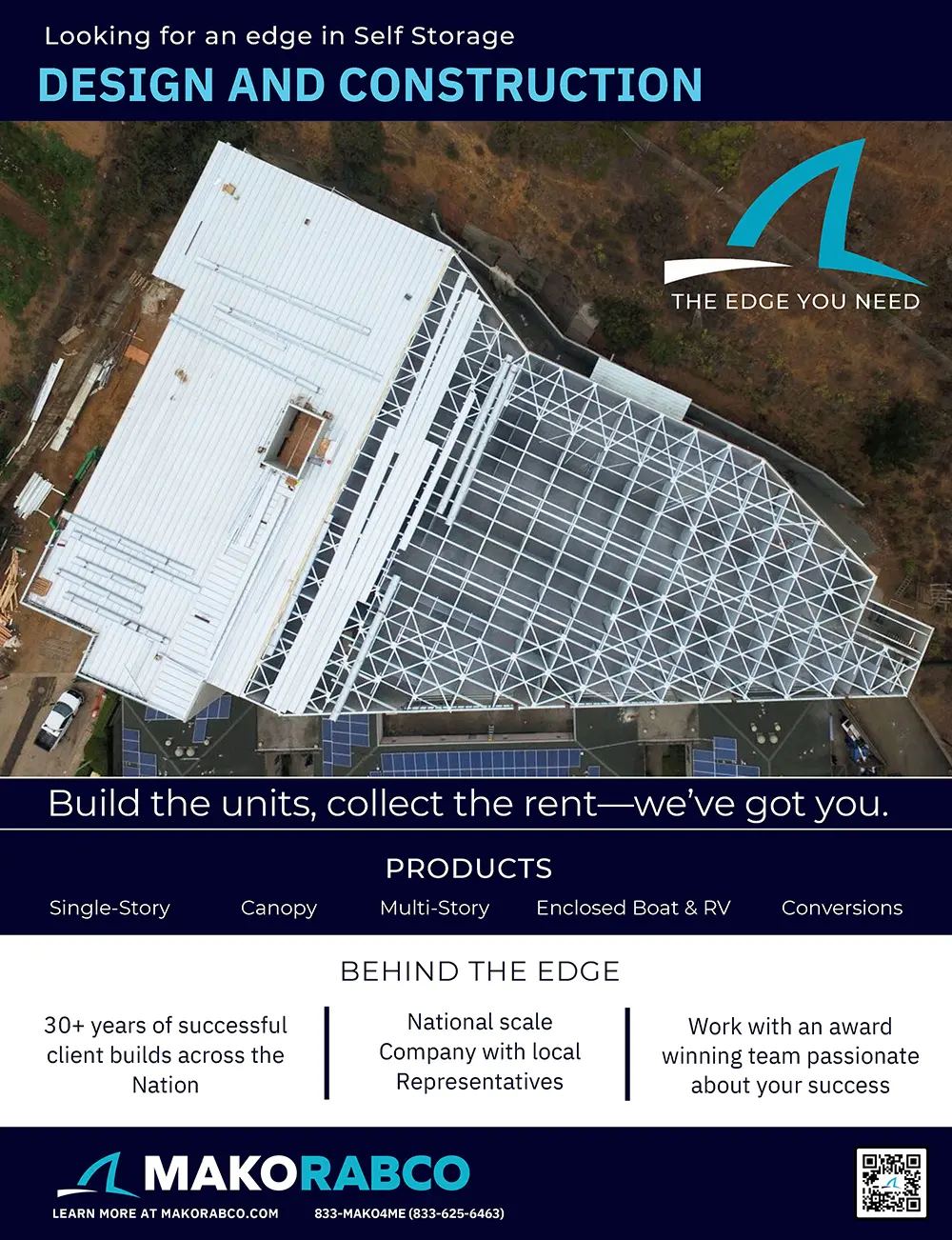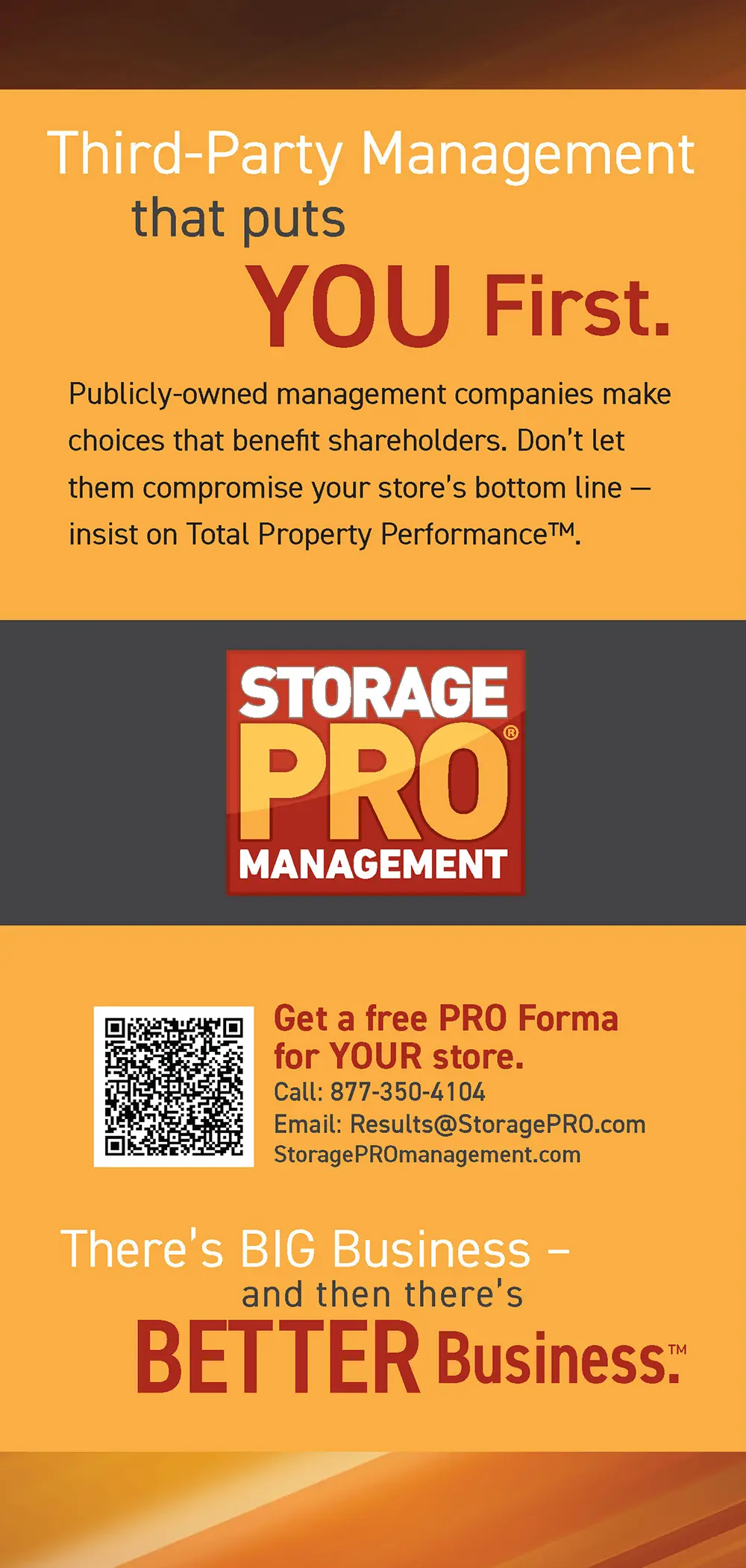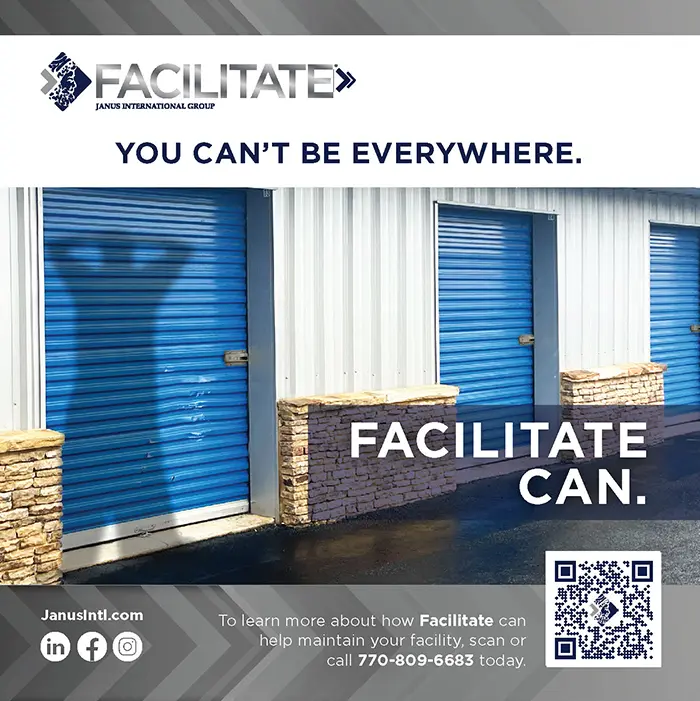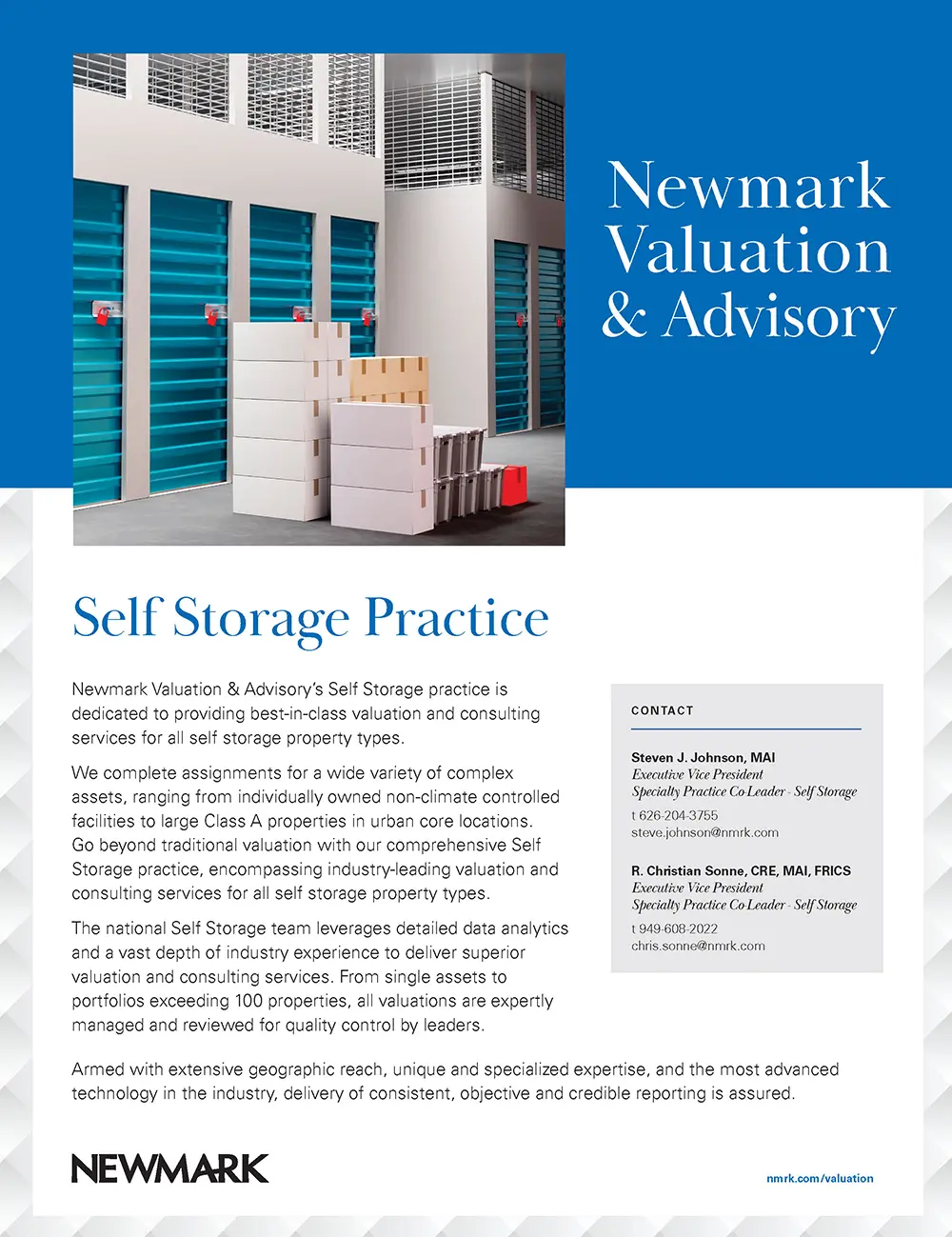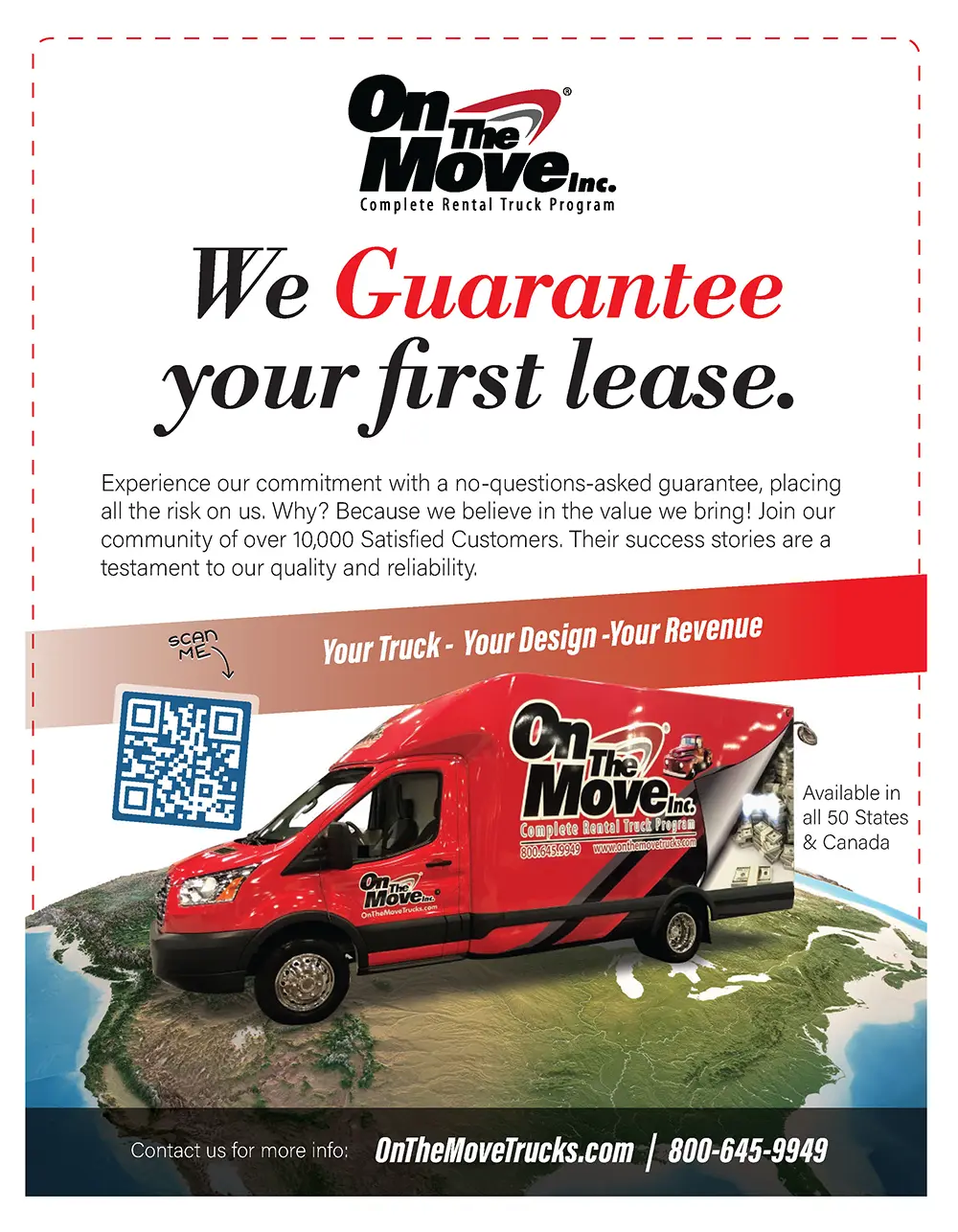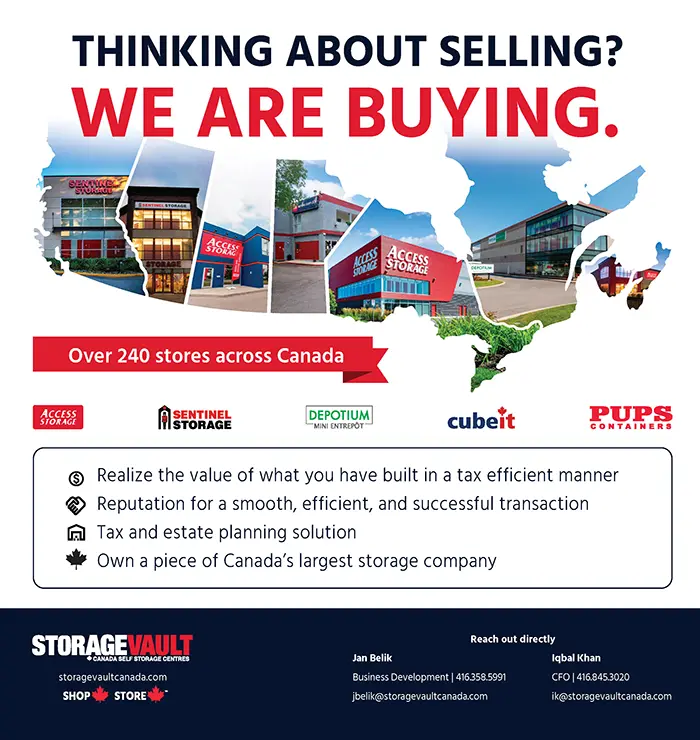How to enjoy our new magazine:
Just scroll!
Click or tap the table of contents icon in the menu bar to find any article.
Read any article by clicking or tapping the read full article button below each article intro.
Jump back to your previous browsing spot from any article using the menu bar or back to issue button.


-
Preparing For And Mitigating RisksPage 12
-
Safeguarding And Navigating CybersecurityPage 14
-
Growing Your Business With Facebook And InstagramPage 20
-
Guarda Brasil’s Vast Humanitarian AidPage 24
-
The Dangers Of Hazardous Materials In Self-StoragePage 28
-
Planning And Zoning Insights For DevelopmentPage 70
-
Why Drive-Thru Storage Is Worth The ExpensePage 74
-
Preventing And Remedying ContaminationPage 76
-
The Benefits Of Working With SubcontractorsPage 80
-
Developing In Tertiary MarketsPage 82
-
Compass Self Storage in Jupiter, Fla.Page 86
-
Readying Your Business For OpportunitiesPage 89
-
Advanced Due Diligence For Passive InvestmentsPage 92
-
Monetizing Solar Tax Credits To Build Storage FacilitiesPage 94
-
The Best Financial Strategies For The SectorPage 96
-
Do The Benefits Outweigh The Challenges?Page 98
- Chief Executive Opinion by Travis Morrow6
- Publisher’s Letter by Poppy Behrens9
- Meet The Team10
- Women In Self-Storage: Ann Parham by Erica Shatzer33
- Who’s Who In Self-Storage: Jacob Pandl by Erica Shatzer37
- StorageGives101
- Self Storage Association Update103
- The Last Word: Chris Walls104
For the latest industry news, visit our new website, ModernStorageMedia.com.
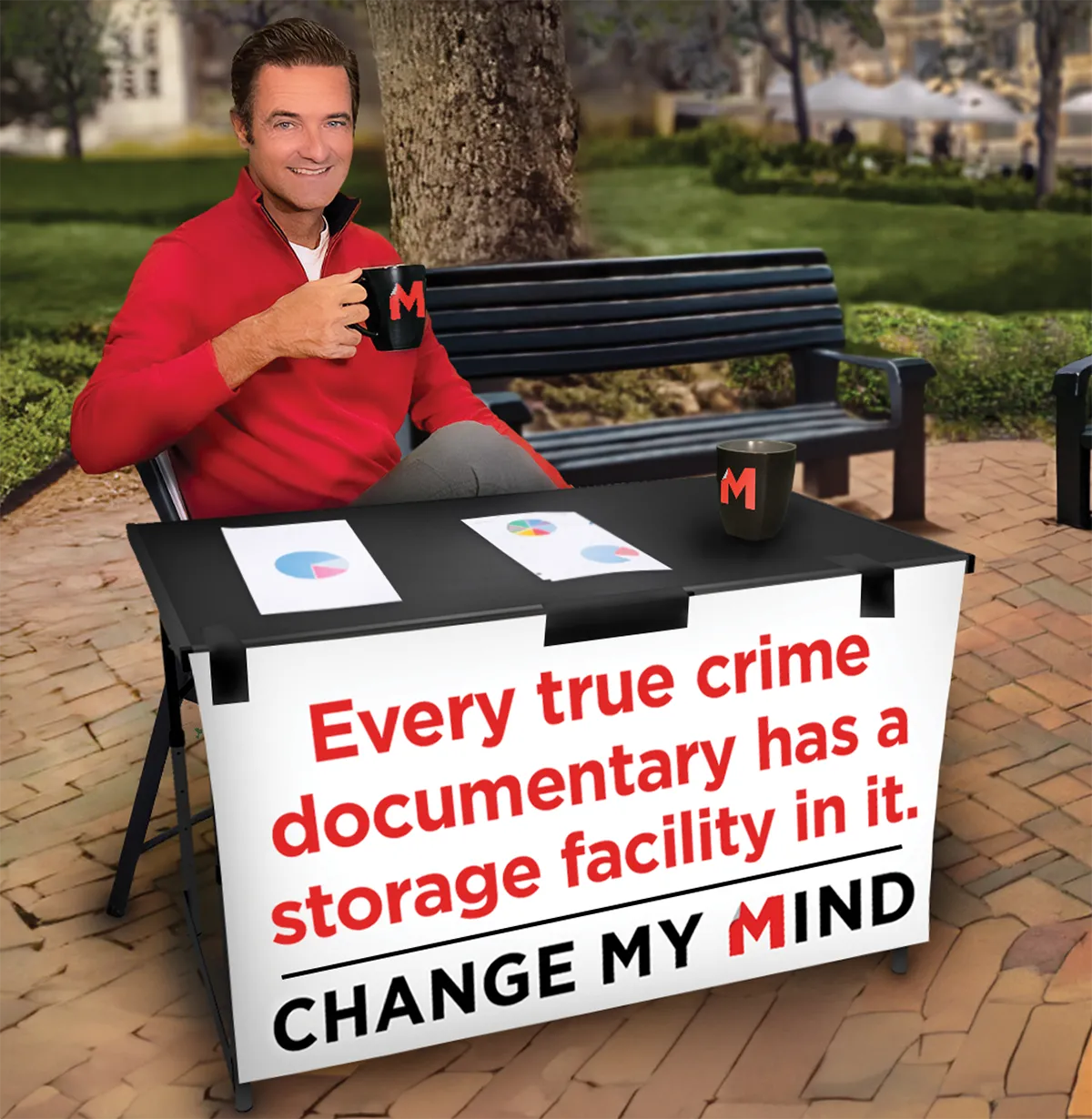

He’s also the president of National Self Storage.

-
PUBLISHER
Poppy Behrens
-
Creative Director
Jim Nissen
-
Director Of Sales & Marketing
Lauri Longstrom-Henderson
(800) 824-6864 -
Circulation & Marketing Coordinator
Carlos “Los” Padilla
(800) 352-4636 -
Editor
Erica Shatzer
-
Web Manager / News Writer
Brad Hadfield
-
Storelocal® Media Corporation
Travis M. Morrow, CEO
-
MODERN STORAGE MEDIA
Jeffry Pettingill, Creative Director
-
Websites
-
Visit Messenger Online!
Visit our Self-Storage Resource Center online at
www.ModernStorageMedia.com
where you can research archived articles, sign up for a subscription, submit a change of address. 
- All correspondence and inquiries should be addressed to:
Modern Storage Media
PO Box 608
Wittmann, AZ 85361-9997
Phone: (800) 352-4636
ach year, Messenger magazine presents its readers with a comprehensive listing of the top 100 operators in the self-storage industry. This year’s Top Operators list, which will once again be ranked according to net rentable square footage, will be published in the November 2024 issue of Messenger and the 2025 Self-Storage Almanac.
For more information, please see here. Above all, if you have not yet taken the survey and would like to participate, please complete the survey no later than Aug. 31st. To begin the survey, please visit www.surveymonkey.com/r/2024TopOps.
If you have any questions about the survey, please feel free to contact me. Thank you for your continued interest in Modern Storage Media and Messenger magazine. We look forward to receiving your response to the 2024 Top Operators survey!
And don’t forget about our annual competitions! The deadlines to submit your Facility of the Year and Manager of the Year entries are quickly approaching. Please see here for additional details or contact me at Poppy@ModernStorageMedia.com with questions.

Publisher

ach year, Messenger magazine presents its readers with a comprehensive listing of the top 100 operators in the self-storage industry. This year’s Top Operators list, which will once again be ranked according to net rentable square footage, will be published in the November 2024 issue of Messenger and the 2025 Self-Storage Almanac.
For more information, please see here. Above all, if you have not yet taken the survey and would like to participate, please complete the survey no later than Aug. 31st. To begin the survey, please visit www.surveymonkey.com/r/2024TopOps.

And don’t forget about our annual competitions! The deadlines to submit your Facility of the Year and Manager of the Year entries are quickly approaching. Please see here for additional details or contact me at Poppy@ModernStorageMedia.com with questions.

Publisher

We have put every issue through 2022 on our website, giving you free access to this wealth of knowledge.




Modern Storage Media



Messenger





theparhamgroup.com
wning or managing a self-storage facility comes with its own set of challenges. Thus, crisis management in self-storage plays a crucial role in ensuring the safety of belongings and maintaining operational stability in the face of potential risks. After all, providing a safe and secure space for customers to store their belongings is your top priority. So, you must be prepared for worst-case scenarios such as theft and vandalism, fires, or natural disasters. Now, let’s see how you can mitigate these risks and safeguard your customers’ possessions and your facility’s reputation.
- Theft can occur when unauthorized individuals gain access to storage units.
- Fires pose a significant risk to the stored belongings and can easily spread.
- Natural disasters can also cause damage to the facility and its contents.
Investing in security systems, conducting regular maintenance checks, and providing customer education on fire safety protocols represent good prevention measures.
Staying informed about changes in regulations and industry standards is essential, not just to ensure that your insurance coverage remains up to date but also to comply with legal requirements. Moreover, educating your staff and tenants about the importance of insurance coverage and assisting them in obtaining appropriate policies for their stored belongings can further enhance the overall protection of your self-storage business.

n an age where digitization permeates nearly every aspect of our lives, the self-storage industry is not exempt from digital transformation. With the convenience of online reservations, payments, and management systems, self-storage facilities have become reliant on technology to streamline operations and enhance customer experience. However, this reliance also exposes the industry to cybersecurity threats that can compromise sensitive data and erode trust.
I come from the physical security world of gates, alarms, cameras, and keypads—things to manage access or prevent it. Without them, you risk unauthorized entry to common and personal space and property. We must apply this theology to the technology side. These layers play a role together, as not one of them can do the job alone. Physical security devices need to be protected from the bad actors who are working to gain access to your information, just like the gate and door locks help prevent someone from wandering on your property. If your facility was across the street from one with those basic safeguards and you had none, would you be competitive? How do you protect your business and your renters’ digital and physical property? How much personal information are you responsible for? This is cybersecurity and what cybersecurity insurance does to mitigate in the unfortunate situation when that scenario happens.
One of the primary challenges facing the self-storage industry is the diverse nature of its clientele. While some customers may rent storage units for short periods, others may require long-term storage solutions. This diversity creates complexities in data management and cybersecurity, as facilities must secure data for both transient and extended periods while ensuring compliance with privacy regulations.
The common misconception is believing that you are too small to be a target. Small and medium-sized businesses are attacked more than large organizations. We just don’t hear about those on the news. It’s just not as interesting or sexy. It’s hard to report on $50,000 when you can sensationalize $50 million. A large, more mature organization will have continuity plans in place and the funds to survive the process. How many SMBs can handle the downtime, remediation costs, or the reputational damage? The answer is almost none! The real cost is not the ransom price but the cost to fix the problem.
ROBUST IT INFRASTRUCTURE
Investing in robust IT infrastructure is essential for safeguarding sensitive data. This includes implementing firewalls, encryption protocols, intrusion detection systems, and regular security updates. Additionally, facilities should consider cloud-based data storage solutions that offer advanced security features and redundancy to prevent data loss in the event of a breach.
EMPLOYEE TRAINING AND AWARENESS
Human error remains one of the leading causes of cybersecurity breaches. Therefore, comprehensive employee training programs are crucial for raising awareness about cybersecurity best practices and potential threats. Employees should be educated on password hygiene, phishing scams, and protocols for handling sensitive information. Regular training sessions and simulated phishing exercises can help reinforce security awareness among staff members.
PRIVILEGED ACCESS MANAGEMENT AND MONITORING
Implementing stringent access management measures is vital for preventing unauthorized access to a company’s and its clients’ sensitive data. Privileged Access Management (PAM) protects against credential theft and privilege misuse by assigning higher permission levels to accounts with access to critical resources and administrative-level controls. PAM is based on the principle of least privilege, which ensures that users are only granted the minimum access levels required to perform their job functions.
COMPLIANCE WITH REGULATIONS
The self-storage industry is subject to various data protection regulations, such as the California Consumer Privacy Act (CCPA). Compliance with regulations is not only a legal requirement but also essential for maintaining customer trust. Payment Card Industry (PCI) compliance is a set of 12 security standards that businesses must follow when accepting, processing, storing, and transmitting credit card data. Facilities must ensure that their data handling practices adhere to relevant regulations, including data encryption, anonymization, and secure data disposal procedures.
Furthermore, the increasing digitization of customer interactions presents opportunities for innovation and enhanced service delivery. Mobile apps that enable customers to access their storage units remotely or receive real-time updates on security alerts can improve convenience and customer satisfaction. However, these innovations must be accompanied by robust cybersecurity measures to safeguard against exploitation by malicious actors.
In conclusion, cybersecurity is a critical concern for the self-storage industry in an increasingly digital world. By implementing comprehensive security measures, investing in employee training, and staying abreast of regulatory requirements, self-storage facilities can protect sensitive data, preserve customer trust, and maintain a competitive edge in the market. As custodians of valuable possessions and information, safeguarding storage goes beyond physical locks; it requires a steadfast commitment to cybersecurity.
For self-storage facilities, cyber liability insurance is particularly vital due to the sensitive nature of the data they handle. From customer personal information to payment details, self-storage facilities possess a treasure trove of data that cybercriminals target for theft or exploitation. In the event of a data breach, the costs can quickly escalate, encompassing not only financial losses but also damage to reputation and customer trust.
Cyber liability insurance policies typically offer coverage across several key areas:
- Data Breach Response – This covers the expenses associated with responding to a data breach, including forensic investigations to determine the cause of the breach, notification costs to inform affected individuals, and credit monitoring services to mitigate potential identity theft.
- Third-Party Liability – If a data breach results in third-party claims or lawsuits, cyber liability insurance can cover legal defense costs, settlements, or judgments. This includes claims of negligence, breach of privacy, or failure to protect sensitive information.
- Regulatory Compliance – In the wake of a data breach, self-storage facilities may face regulatory investigations and fines for non-compliance with data protection laws. Cyber liability insurance can help cover the costs of regulatory defense and any resulting fines or penalties.
- Cyber Extortion – In the event of a ransomware attack, where cybercriminals encrypt data and demand payment for its release, cyber liability insurance can cover ransom payments as well as the expenses associated with negotiating with extortionists.
COVERAGE LIMITS
Ensure the policy provides adequate coverage limits to mitigate potential financial losses in a cyber incident. Assess the potential costs of data breach response, legal defense, regulatory fines, and other expenses to determine appropriate coverage levels. The most common portion underinsured is the aggregate relative to the company revenue. It needs to be at a point where the insurance can float the business during the downtime.
POLICY EXCLUSIONS
Pay close attention to policy exclusions to understand what is not covered under the insurance policy. Common exclusions may include acts of war, intentional acts, or certain types of cyber incidents.
ADDITIONAL SERVICES
Some cyber liability insurance policies require additional controls in place, such as risk assessments, employee training, and breach response planning. IT Managed Service Providers (MSPs) services can help self-storage facilities strengthen their cybersecurity posture and mitigate risks proactively while managing the technology on the day to day.
We can no longer do it ourselves or have a guy. We can no longer hope it doesn’t happen to us or wish for the best. Self-storage needs dedicated, hands-on IT services and insurance, whether internal or external. Now add the high-level experts to guide those in the trenches. It requires specialized expertise in key areas that the proverbial Swiss Army knife individual can no longer do at a level we need things done. We are at the beginning of a new frontier, and we must embrace and trust those that dedicate their time to understanding to help protect our business and our clients.

hen Carol Mixon, president of SkilCheck, Inc., in Tucson, Ariz., is having issues with a manager, she talks to the employee and then typically enacts a 30-day to 90-day plan to correct the issues, hoping she can retain the employee.
Why try so hard to retain a manager? According to the Society of Human Resources Management (SHRM), the average cost per new hire is $4,700, so the decision to hire (and then let an employee walk) can be costly to a self-storage business.
It may seem that you cannot control what your employees do or think about seeking new employment, or you feel you’re powerless to prevent issues that result in the employee being terminated, but experts within the industry say you have more power than you might think. Here are six ways to retain employees.
1
Many companies then go through a multilayered interviewing process that involves one-on-one and committee interviews. Diane Gibson, president of Cox’s Armored Storage in Phoenix, Ariz., says her company involves managers in the interviewing process who would be working directly with the new hire. “We want them to be compatible,” says Gibson, “and we find there is a lot less turnover if the person at the store handles some of the interviews.” This process also helps her managers feel empowered in decision-making.
When it comes to what they are seeking in a candidate, it’s less about prior experience in self-storage than it is about finding the right qualities, such as salesmanship and customer service abilities. “We’ve hired our best managers who may have been living out of their cars,” says Gibson. “It all comes down to the interview process.”
Randy Weissman, COO for Pogoda Companies in Farmington Hills, Mich., says one other important quality they seek in a new hire is the ability to work on their own. “It takes a special person to be motivated to work unsupervised,” he says.
If it appears the candidate is advancing in the selection process, it’s important to do your own homework. “Probably the most difficult thing is the hiring process,” Mixon says. “You can’t know everything about your applicants, but there are many ways to find a lot of information.” She advises doing a background check, which includes cross referencing prior addresses on reports; this may reveal an employer within the industry they excluded from their application. It’s very important to check references as well. “Believe it or not, I’ve called many references who had previously fired an applicant,” Mixon says.
2
However, in most instances, money isn’t the only way to help keep your employees motivated. It helps to empower your employees to make decisions. “Allowing the manager to make some decisions without having to run to upper management gives them autonomy and ownership and helps them feel empowered,” Weissman says.
Personalizing incentives can keep employees motivated too. “Know their interests,” says Mixon, “and if they have an interest in golf, for example, give them a golf-related gift certificate. It not only helps keep them happy and motivated, but it also shows your employees you care about their interests.”
One way USG keeps communication open is through surveys and performance evaluations that require employees to evaluate their own performance before talking to their manager. “We all learn a lot through those self-evaluations,” says Ballard.
Gibson says listening is a very useful tool. “My employees know I’m a listener and I’m open to all suggestions,” says Gibson. “If someone suggests something and we cannot implement their suggestion, it’s also important to explain to them why.”
Rita says their survey once revealed that their employees weren’t happy with the medical insurance. “We found a great plan and decided to absorb the costs,” says Rita. “It’s very expensive to replace an employee; it was worth a few hundred dollars to improve the insurance plan.”
Sometimes, it may be as easy as transferring a manager to a different store. “They may not be a good fit for whatever reason,” says Mixon. “They may need a fast-paced environment and they’re in a slower store, or it could be the neighborhood.”
Other times, a situation just isn’t going to work out, says Gibson, who adds that employees must be willing to give 110 percent. “I tell them if they are doing that, we will row with them, but if they aren’t willing to do it, I will not sink with them.”
The most important thing is to follow all the steps to help motivate and keep them happy, especially communicating with them. “I always tell my employees, if you’re going to be relieved of duties, it will not come as a shock.” However, following the points presented in this article has served her and our other experts well. “By far, I have more employees who have been with us for 10 years or longer than not,” says Gibson.

n April, the State of Rio Grande do Sul in Brazil was hit by a flood described as the biggest climate catastrophe in the history of the region. Around 60 percent of the state was affected; the water reached levels as high as 26 feet in some areas, leaving a big part of the population homeless and almost 200 dead.
The Guarda Brasil Self-Storage company was first approached by volunteers at the end of April, asking the company to provide a space to store donations. As time went by and the water levels continued to rise, the operations began to gain a life of their own; more volunteers from different cities began to get in contact and soon needed extra space as well as extra sets of hands to help with the big volume of donations, which the company happily provided.
The Brazilian self-storage company Guarda Brasil opened its first facility in 2016. Now, they have a total of five facilities distributed around cities in the south of the country. The company has been in the country for almost 10 years, but the owners have been in the market since 1980, when they started their first self-storage venture in the U.S.
Four of their five facilities in the region, luckily, weren’t hit by the flood and were able to become donation hubs during this crisis. The facilities are still receiving donations from all over the country as more and more people sympathize with the cause and come together, creating their own regional campaigns to bring some comfort to the people affected by the floods.
With the increase in demand, as more cities and neighborhoods were also affected, the company started campaigning for donations. Their first effort was to have their collaborator Joelena create and send an informative flyer to their customers, promptly disseminating the information. The campaign generated a significant amount of donations, and they soon decided to start using their social media to support the campaign.
The workers of Guarda Brasil have been receiving and redirecting donations to the people who need them, as well as partnering with local businesses to donate the items that are being promoted online as the biggest necessities by official channels.


One of the main demands is for clean drinking water. To help, some volunteer customers of Guarda Brasil met at the facility and started to raise funds to buy bottled water for victims after securing a deal with a water company that agreed to sell it at the price of production to help the victims of the recent tragedy. The campaign response was rapid and successful, with customers and locals willing to help.
Another part of the campaign was to have their staff call customers asking them to donate any items in their storage spaces they didn’t want, as most families affected by the flood lost everything they owned, and every donation counts. One of the clients volunteered to help collect donations and transport them to Porto Alegre, one of the most affected cities, ensuring that the help reached those who needed it as fast as possible.
In the facility in Novo Hamburgo, their collaborator Lucas established a fundamental partnership with the Association of the Military Brigade and Military Fire Brigade of Rio Grande do Sul (ABAMF). With this, the association announced that Guarda Brasil had become an official donation collection point, which helped their campaign grow as people started to trust their donations were being directed straight to relief efforts. With the partnership, the association is also committed to collecting and distributing the items appropriately, ensuring that aid is delivered efficiently.
The Mossunguê facility in Curitiba also became a donation center, and some of their customers offered to help ship the materials to the State of Rio Grande do Sul. A customer of the facility, who is responsible for the logistics of distribution of cleaning materials to large companies in the states of Paraná and Santa Catarina, offered to align with its supplier the donation of some materials to help with the cause.


Judson Shannon, CEO of the company, said they currently have an entire team actively working toward it. “I told some of our staff to go out and offer spaces to nonprofits and charities to use as collecting centers free of charge,” he states. The flood had created so much chaos in the state that he felt the company had to do the best they could to help. “Everywhere in the state became a donation center overnight, from supermarkets to local businesses. Everyone is receiving donations and redirecting them to the cities affected. We have big spaces, and we are offering them to donation centers that are at capacity to support the movement.”
Shannon believes the self-storage business will be essential to the reconstruction of the state. Thinking of that, the company started to offer discounts and logistical support to those affected by the flood. “We are offering 25 percent discounts to the victims. I am also offering for some of them free moving or 50 percent off moving, depending on the distance,” he says. “Many people lost their houses, their jobs. People can come to us to rebuild their business and register it with our address. We offer a full service that accepts their boxes and sends them out to pick up. They don’t even have to come to our facilities. They can just authorize us to put it in their storage spaces. We do the entire service.”
All their facilities have office spaces where people looking to rebuild their businesses can work. This feature has been available since it first opened its doors in 2016. “It’s a common feature we see in facilities all over Latin America,” Shannon adds.
The company, however, didn’t survive the flood completely intact. Their facility in the city of Porto Alegre was also affected by the water. “Most of the warehouses in the city are in the same area, and we are all currently working on repairs as the water is finally going down,” Shannon states.
As water levels began to recede, the Civil Defense issued a new warning of strong storms in the state. The devastation has no prospect of ending anytime soon. But Judson, his business partners, and all their staff are devoted to helping everyone affected by the flood during this tragic time in the history of Rio Grande do Sul.

iven the slowdown of the storage industry in late 2023 and 2024, it is time to get back to marketing basics and the ground war that made many of our sites stand out from the others. Just about all small and large operators embrace today’s internet and SEOs to drive traffic for rentals. This internet marketing has worked for all of us, but now is the time to stand out from the other competitors with grassroots marketing. What do I mean? Hit the streets and knock on the doors of apartment complexes, retailers, assisted living communities, nursing homes, and others.
Boots on the ground marketing has become a lost art driven away by the internet. Why not have the best of all worlds and add additional business from a couple hours of weekly marketing to the area businesses when many of the competitors are asleep at the wheel? I get calls from clients each week complaining about the drop off in rentals; when I ask what they are doing to market their sites, I’m met with silence. I ask what they have done to invest back into the community and the answer is usually nothing. Well, there you have it. In the old days, before the internet, the site’s success was often tied to direct marketing, flyers, broker breakfasts, high school sponsorships, etc. These efforts made the difference in rentals. Now, with a slowdown and an oversupply of storage, grassroots marketing (and being able to grab any rental possible without giving severe discounts) is a must for today’s success.
I currently use this grassroots marketing for my sites, and we have not decreased in occupancy but instead increased as we started in early 2024. Our revenues are higher by a large margin over 2023, with no end in site based on the successful marketing campaign. Many businesses and apartment communities have said, “I’m glad there is still a storage company that wants our business, and since you are the first one to show, your site will get all the referrals.” We are in the process of contacting the local high school to sponsor a site banner with a special QR code that can be scanned for a special discount on available units. We will be using door hangers in the ZIP codes where the largest share of our renters come from for rentals. We also data mine our tenants for constant referrals, offer their friends a waived administrative fee or free lock for renting (95 percent of the time they take the free lock), and give a one-time credit to the existing tenant based on the unit size rented (from $25 to $100). This strategy has worked like a charm in drawing tenants away from competitors as they’re tired of getting two or three rent increases a year. The tenants then tell their friends from the previous storage site, and we make out like a bandit.
Want a quick acid test of how well located your site is by name and location in your three-mile radius? Go to various businesses and ask them if they’ve ever heard of your site; if they cannot answer, you have failed at your local investment and/or grassroots marketing efforts. This is where most storge has failed to keep up, thinking the investment could not slip as far as it had in 2024. Name recognition is everything in today’s market. Forget about competing with the REITs and large regional players by internet SEO presence alone. You can compete against them with grassroots marketing; they are not going to be hitting the streets, and this is where the difference is made in a soft market. My management company competes against the REITs in smaller markets; we advertise at all levels and have always done it that way, but this year required a new start and we are glad we did.
A slow spell is no time to cut the sites’ advertising budget; you must increase it to keep in front of the consumer. Your site is the one you want to be recommended by apartment managers, nursing home attendents, retailers, etc. With consistent visits each week, unless the manager is grumbly, the marketing return should pay off quickly.
These marketing visits are not one and done; they are a weekly activity to boost a relationship with the employees sending prospective tenants your way. Have the manager document where/when they went, whom they visited, and what was discussed as far as an offer. Marketing can be tracked through marked flyers with a number that the tenant must bring in for a special discount. When the manager tracks the marketing return by a numbered flyer, they can thank the referrer with a gift basket, cash referral if allowed, movie ticket, a pizza, a box of donuts, or something else. If you find out you have a super star referral person sending business the site’s way, make sure to recognize their effort, not stop in its tracks. This is not the time to get pennywise and pound foolish, or the business will disappear.
If the site’s move-in volume has dwindled, give the above ideas a try. You might just be surprised at the results! Use a five-point marketing plan, going to a particular area’s businesses each week on a certain day and following up the next week. Drop off pens, flyers, magnets for move-in packages, etc. Make a special flyer for real estate offices that can be tracked and offer to sponsor an office breakfast meeting to explain the benefits of decluttering a home for listing. These strategies will not work unless there is consistent follow up.
Let’s hope that the interest rates drop in the fall to allow for increased home sales and commercial expansion to return to the days of past. In the meantime, hit the streets and get back to grassroots marketing. It may be the difference between making a profit and losing money. Good luck!

elf-storage is often described as “dead storage,” where seldom used personal property can be stored for an indefinite period of time. The expectation is that the property being stored does not include items readily in need by the person storing those items, nor are the items perceived as either dangerous or threatening. This last part is important, since there is tremendous risk in allowing just anything to be stored in a self-storage unit, especially one that has no climate control and may suffer excessive heat during the summer months.
In addition to the standard items that are prohibited to be stored, notably food or other perishables, it has become increasingly clear that operators want to notify their tenants that they should not be storing any type of ammunition, fireworks, or lithium batteries in their rented spaces, regardless of the operator’s efforts to control the temperature in these spaces. Too many fires or other dangerous conditions have erupted due to the storage of these items.
It seems somewhat obvious that explosive materials like fireworks or ammunition should not be stored in a self-storage unit. Numerous examples can be shared of significant damage caused by the improper storage of these devices in storage units as well as the danger posed to first responders who are battling fires caused by these items. Now operators can add to their list certain batteries that are subject to leakage over time if not properly stored. It is recommended that self-storage operators include lithium batteries to their list of prohibited items to be stored in self-storage rental units, especially non-climate-controlled units where excessive heat could impact the integrity of the battery and cause a fire.
Due to these clear concerns, many operators now are trying to provide clear guidance to their customers about the risk of storing dangerous or hazardous materials in self-storage units. These notices and restrictions can be found not only in the facility’s rental agreement but also in their marketing materials and property signage.
As part of the rental agreement, operators need to clarify for their customers what they are allowed to store and what they are prohibited from storing. A typical “USE” provision might read as follows:
USE OF STORAGE SPACE:
Occupant agrees to use the Space only for the storage of property wholly owned by Occupant. The Occupant agrees that the Facility and the Occupant’s property will not be used for any unlawful purposes or contrary to any law, ordinance, regulation, fire code or health code and the Occupant agrees not to commit waste, nor to create a nuisance, nor alter, nor affix signs on the Space or anywhere on the Facility, and will keep the Space and the Facility in good condition during the term of this Agreement. Occupant agrees not to store collectibles, heirlooms, jewelry, works of art, or any property having special or sentimental value to Occupant. Occupant waives any claim for emotional or sentimental attachment to the stored property. Occupant shall not loiter at the Facility, spend excessive or unnecessary time in or around the Space, or interfere with the use of the Facility by other occupants. Any access to the Facility outside of access hours is considered trespassing. Occupant shall not store food or any perishable items in the Space. Unless otherwise agreed to in writing with Operator, Occupant agrees not to conduct any business out of the Space and further agrees that the Space is not to be used for any type of workshop, for any type of repairs, or for any sales, renovations, decoration, painting, or other contracting. The Occupant will indemnify and hold the Operator harmless from and against any and all manner of claims for damages or lost property or personal injury and costs, including attorneys’ fees arising from the Occupant’s lease of the Space and use of the Facility or from any activity, work or thing done, permitted or suffered by the Occupant in the Space or on or about the Facility. Occupant shall not be permitted to store any flammable or hazardous materials including, but not limited to: fireworks, ammunition, or lithium batteries. Occupant shall not (and shall not permit any person to) use the Space in any manner that would be a violation of any applicable federal, state, or local law or regulation, relating to use or distribution of marijuana. Violation of any provision in this Paragraph shall be grounds for immediate termination of this Agreement.
In addition to the Rental Agreement, notice of these restrictions should also appear with appropriate signage in the rental office and around the facility premises. Simple signage such as “Please DO NOT Store …” are sufficient and a great reminder to tenants who may otherwise unintentionally store these items without consideration for their danger.
The last suggestion about notice would be in the facility’s brochures and websites. In fact, many operators include separate pages as part of their websites that offer guidance of not only what can and cannot be stored but also helpful hints as to how items should be stored to prevent damage. It is on these pages where tenants should be reminded of the dangers of storing certain hazardous materials.
Finally, operators need to be diligent about talking with their customers about what should and should not be stored in their storage units and should be vocal when they see any improper use of a storage unit. Prevention and deterrence are key to avoiding the risks of hazardous materials being left in rental units.
He can be reached at Scott@wzlegal.com.


• Excellent customer service skills • Exceeded expectations and goals
• Initiated special programs and/or operational methods • Sound business practices
• Enhanced facility performance
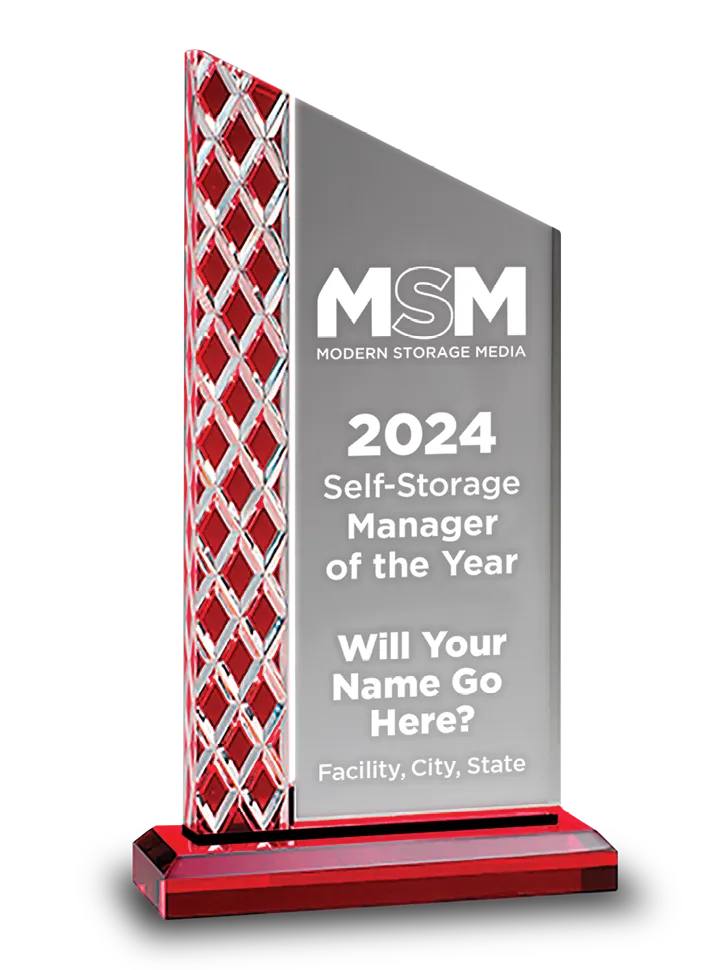
The winning manager and two runners-up will be featured in the Q4 2024 issue of Self-Storage Now! and the January 2025 Messenger. The winning manager will receive a $250 Visa gift card and a commemorative trophy. Each runner-up will receive a $100 Visa gift card and a commemorative plaque.
Click the button or visit the URL below to read our full guidelines and how to complete a submission.

uring the days of disco, Ann Parham, CEO of The Parham Groups, was a student at Stephen F. Austin State University in Nacogdoches, Texas. The times were changing, and new opportunities were becoming available to females throughout the United States. So, when the educational institution’s Army Reserve Officers’ Training Corps (ROTC) permitted women to join, Ann, whose father was in the military and who calls herself a “natural boss,” was first to enroll. She went on to become the program’s first female commissioned second lieutenant.
That’s also where she first met her husband Michael “Mike” Parham. They hit it off and started dating. It wasn’t long before they were married. The year was 1976; Ann, a junior in college, was 20 years young. Although they found themselves at the altar slightly sooner than anticipated, they wed in order to be stationed together upon completion of the ROTC program. Unwilling to be separated, that hurried union turned into 39 years of marriage.

After graduation, Ann was stationed close to Indianapolis, Ind., at Fort Benjamin Harrison, where she completed her officer basic course for three months. Mike attended engineering school at Ft. Belvoir in Virginia, which was a six-month course. Ann was delving deeper into her leadership and management training, focusing primarily on personnel management and club management. There she further developed the skills necessary to eventually lead offices and companies.
Their careers began to shift in different directions after they returned to their home state of Texas. They were both stationed at Fort Hood (now known as Fort Cavazos) in Killeen, where Ann worked at III Corps, the office that was responsible for starting the military’s first personnel database, and Mike was assigned to 62nd Engineer Battalion. Processing data within that database to produce meaningful information became her newest proficiency—an aptitude that set her up for a career outside the Army. Then they made the decision to leave military life and pursue a civilian career.
About being one of the only females in the officer rank from the late 70s to mid-80s, Ann says she made it a point to “do a better job than anyone else” to earn the respect and acceptance of her male counterparts, essentially “winning them over with performance.”
Subsequent to acquiring a wealth of knowledge about leadership, management, and data processing, Ann joined Affiliated Computer Systems (ACS) in Dallas, Texas, the company that started the automatic teller machine (ATM). She was working third shift at the company’s downtown location in data processing management, the production shift that ensured the ATM withdraws were processed. “It wasn’t live,” Ann says about the reporting of account holders’ available balances, “so there were lots of overdrafts.”
Then, in 1993, with two daughters and one company under their belts, the Parhams grew again, adding their son David and Noah’s Ark Development to their lives. Because the department she was managing dissolved, and Mike’s administrative assistant left, Ann took on a permanent position within the family business.
Four years later, Mike built the family’s first self-storage facility with future phases already in mind. It was a single-story climate-controlled and non-climate buildings on a hill in Bulverde, Texas. Ann thought he was “crazy” at the time, but she served as its first property manager.
“It was a baptism by fire,” Ann says, acknowledging that she knew nothing about self-storage management at the time. Nevertheless, her life experiences as a second lieutenant, production control manager, wife, and mother enabled her to take on the position with extraordinary acumen. In fact, she did such a remarkable job that the Parhams founded Joshua Management in 1997 to manage the Noah’s Ark facilities they were developing. As president, Ann led it to great heights, securing placement on Messenger’s annual Top Operators list numerous times. At its largest, Joshua Management was managing 15 facilities throughout Florida and Texas.
“I’ve done every job except superintendent,” says Ann. “I can relate to managers because I’ve been in their shoes. It’s not as easy of a job as owners may think.”
Moreover, Ann’s military background didn’t persuade her to utilize the stereotypical authoritarian leadership style often associated with drill sergeants. Instead of being inflexible and domineering, she created a collaborative environment that enables managers to thrive.
Ann knows that being an active member of the community is how self-storage facilities can stand out from the competition and create a positive brand image. Facilities managed by Joshua Management support their communities, and the Parhams do too. For starters, they make donations to In His Steps Foundation, the Christian charity foundation that supports nearly 50 ministries through endowments. They’ve assisted people with medical needs; provided funds for scholarships; and contributed to countless clubs, organizations, and sports teams within local schools in various ways. The Parham Group also supports Food For Kids, a program that helps make nutritious meals more accessible for low-income families, and participates in an annual Angel Tree program that enables prisoners to provide their children with Christmas gifts thanks to the generosity of others. “This is our family non-profit that has been in existence for 20 years,” says Ann. Their company-wide participation aids more than 100 families annually. They also provide free building services to Bracken Christian School, the one Ann’s children attended.
It’s proven to be effective, as Ann points out that one employee has been with the company for 29 years. “They don’t leave! We provide what they need to succeed.”
What’s more, Joshua Management’s managers are trusted to problem-solve and think on their feet rather than adhere to canned, impersonal scripts. “Not all responses can be typed,” says Ann. “Every store is different. You can’t manage them all the exact same—managers or stores.” For that reason, the company’s team members serve as “test customers” for managers in training to enable them to learn how to handle various situations that may arise on the job. Property managers are selected to fit the market on hand, and the way in which they manage sites is based on the demographics. According to Ann, operating every property the exact same way, regardless of the city and its people, “doesn’t fly.”
Her successful management methods resulted in her becoming a trusted and respected professional within the self-storage industry. As such, Ann was frequently called upon to lead round table discussions, author educational articles, supply advice for various management-related articles, and speak at conferences for the Arizona Self-Storage Association, Texas Self Storage Association, and Louisiana Self Storage Association. Additionally, The Parham Group has won five of Messenger’s prestigious Facility of the Year awards (1991, 1994, and 1996 as well as the Construction Facility of the Year award in 2014 and the Overall Facility of the Year in 2015).

“We called clients to tell them we’d be carrying on,” recalls Ann. “Having to pick up everything and losing him was the greatest challenge of my life, but I knew staying in bed wouldn’t help.” They didn’t have set succession plans in place per se, but they knew at least Rachel would carry on the business; she had been working alongside Mike for several years before his death. Ann adds that being prepared for the inevitable is advantageous. “The best gift to give your family is having everything in place.”
As the matriarch, Ann became CEO and president of the Parham Group, while Rachel stepped into the role of president at Noah’s Ark Development and NDS Construction and David joined the business to assume the role of president of Joshua Management. Together, the family maintains the same core values and principles on which Mike founded the companies.
Since that shift in leadership, Ann, who is beyond proud of her three successful children, has been trying to take more of a backseat in the business. “I’m allowing them to take over some,” she says, which can be difficult for a woman who’s used to being in charge. “I’m working in more of an advisory capacity now and training others to go to David and Rachel for answers instead of me.”
Giving Rachel and David more leadership leeway has provided Ann with more time to pursue other interests. She’s currently more involved with her own community, serving on the boards of nonprofits and the local chamber of commerce.
And while Ann may make time to travel, she isn’t likely to walk away from The Parham Group entirely. “I will probably always have a foot in the door,” she says, “but I’m no longer the future of this company—Rachel and David are.”

id you know that more than half (55 percent) of U.S. companies exclusively practice reactive maintenance? That startling statistic, originally reported in the Schneider Electric report “Predictive Maintenance Strategy for Building Operations: A Better Approach,” has been cited by numerous maintenance resources and aligns with the outdated idea that “If it’s not broken, don’t fix it.”
But is that a maxim that maintenance personnel should live by? Would those companies change their approach to maintenance if they knew that regular preventative maintenance can save a business 12 percent to 18 percent in total maintenance costs (according to American Machinist)? Would they follow the 80/20 rule (80 percent of the maintenance budget is allotted to preventative maintenance and 20 percent is reserved for reactive repairs), like many maintenance departments do, to keep staff focused on facility upkeep?

“Operational costs and competition have increased significantly since the recent boom cycle,” Pandl says, which has made extending the life of existing assets and infrastructure more important than ever. “Self-storage operators are increasingly looking for opportunities to reduce unnecessary spend and be more efficient with the resources they have.”
Regardless of the rationale, preventative maintenance is a worthy expense. Keep this incisive idiom in mind anytime you find yourself questioning an upkeep cost: “An ounce of prevention is worth a pound of cure.” There are plenty of possible scenarios that prove its truthfulness.
As an example, let’s say a wine storage facility offers temperature control and humidity control for its customers’ expensive (and sometimes irreplaceable) collections, but the backup generator hasn’t been serviced in years. When a hurricane hits the area and that generator doesn’t switch on during the power outage, all the customers’ wine collections spoil. Because the facility claimed their collections would be safely stored at a specific temperature and humidity level—even during power outages—several customers decide to file lawsuits for their losses. The facility has collectibles insurance, but failure to have the generator serviced resulted in hefty lawsuits, a substantial increase to its monthly insurance premium, a loss of tenants, and a sullied reputation—all of which could have been avoided with routine maintenance. Similar situations could occur when other unmaintained equipment malfunctions, such as HVAC systems, sprinkler systems, security systems, roof systems, elevators, or even roll-up doors.
“It offers peace of mind,” Pandl says about preventative maintenance, “knowing the intricacies and what’s needed to keep things operating and running at optimal efficiency.”
Alternatively, what about the owner-operator who follows the “better safe than sorry” motto and has the maintenance crew servicing equipment more frequently than necessary because the facility manager wasn’t keeping track of the dates or details? They could end up spending too much money on air filters, for instance, if they are being changed prior to the manufacturer’s recommendation. Pandl says asset tracking enables owner-operators to “be more effective with their time and capital.”
“Be diligent about having a clear, standard process to cover the details,” he says, noting that it can be difficult to remember when specific maintenance tasks need to be completed and/or when assets were last serviced, especially when you’re using a hub-and-spoke model and/or managing multiple facilities.
Pandl recommends setting up reminders and recurring schedules so that no routine maintenance is missed and utilizing various checklists (daily, weekly, monthly, yearly) that managers must complete as a record of maintenance to help keep the facility running in tip-top shape. Self-storage associations and management companies may offer templates and/or sample checklists if you’re unsure where to start or you’re worried that items may be inadvertently ignored.
“Don’t let perfection be an enemy of progress,” says Pandl, who believes that facility hygiene is important and shouldn’t be overlooked. “It’s important to keep the 80/20 rule in mind. Start with a plan that’s relatively easy to implement and covers high-value items, such as standard facility audits and fire extinguisher inspections.”
For those who have a plan but are seeking an alternative to paper checklists and/or spreadsheets, a FOS like nodaFi can further streamline maintenance tasks. Additionally, if your growing portfolio needs to be better organized and/or you’re looking to switch to a different FOS, he advises owner-operators to select one that communicates with the other software systems and works well within the self-storage tools currently in use at the site(s).
Many facility operations systems can be accessed through tablets and/or smartphones, enabling personnel to take photos and quickly add details while “in the field” or walking the property. They may include task management features or digital to-do lists that keep track of maintenance duties and eliminate the need for spreadsheets and paper checklists. Some also permit users to create work orders on the spot and simplify lock checks by generating discrepancy reports, thus saving managers valuable time and energy. This means that issues can be resolved in a timelier manner too, which helps better the business.

Facility operations systems can impact employee performance as well. Pandl mentions that QR codes can be utilized at facilities to improve time management. “It keeps employees honest,” he says, adding that the QR codes can show who is doing the work, when they are doing it, and how long it took them to complete the task. “And most importantly, it helps them use their time more effectively.”
Even call center staff can utilize a FOS. “The entire team can work together,” says Pandl. “They can be on the same page with consistent communication.”
About implementing a FOS at a self-storage facility, Pandl says, “The ROI is substantial. Preventative maintenance is a great trend that results in less unexpected expenses. A better maintained facility means less depreciation, which is better for valuation. It also leads to better customer reviews.”
With property and consumer appraisals at the forefront, facility operation systems could be the solution to meeting customers’ ever-increasing expectations while reducing reactive maintenance costs. “In a couple years, having a robust facility operations system in place will be seen as essential for a well-functioning operation, much like a property management system is considered indispensable today.”

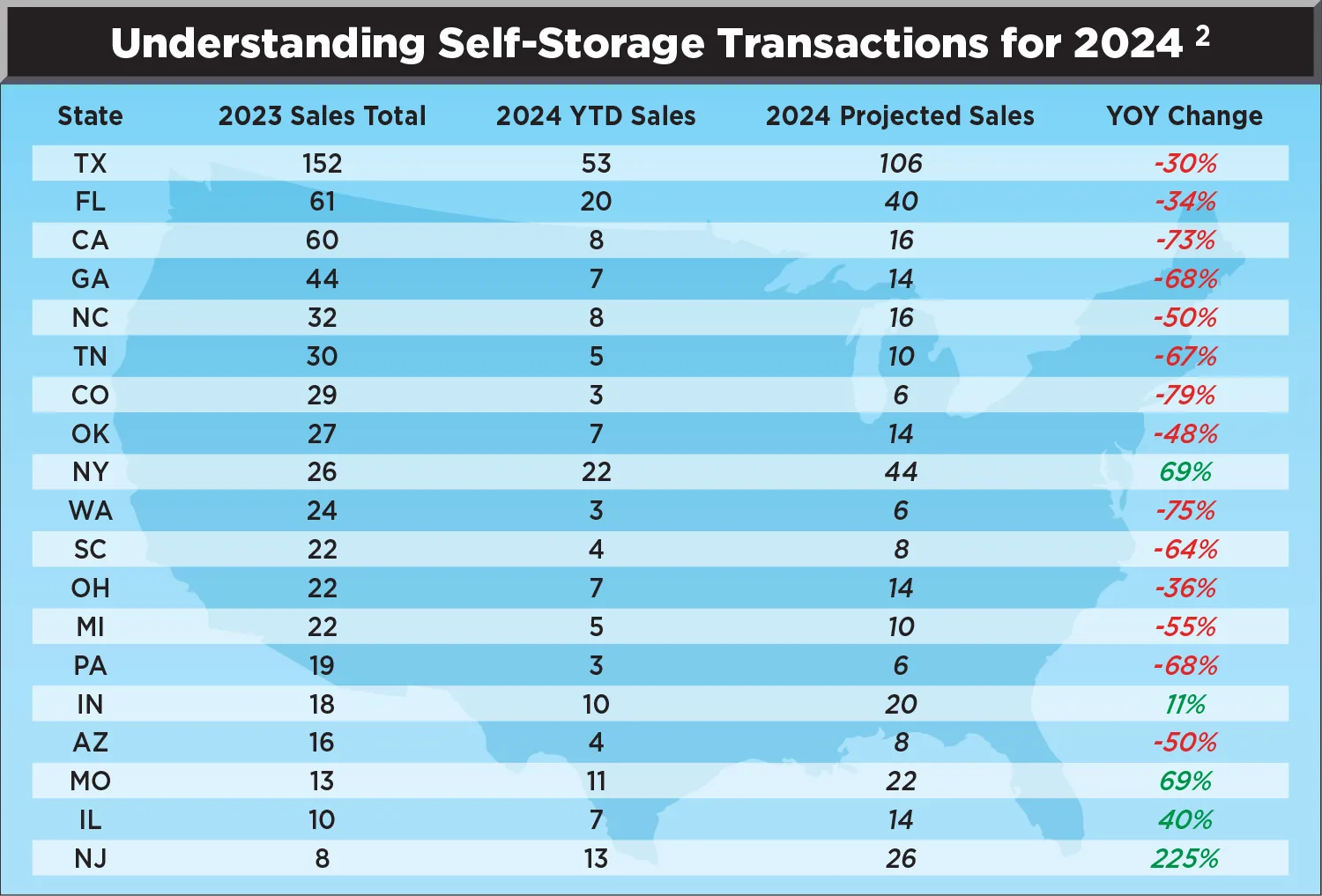
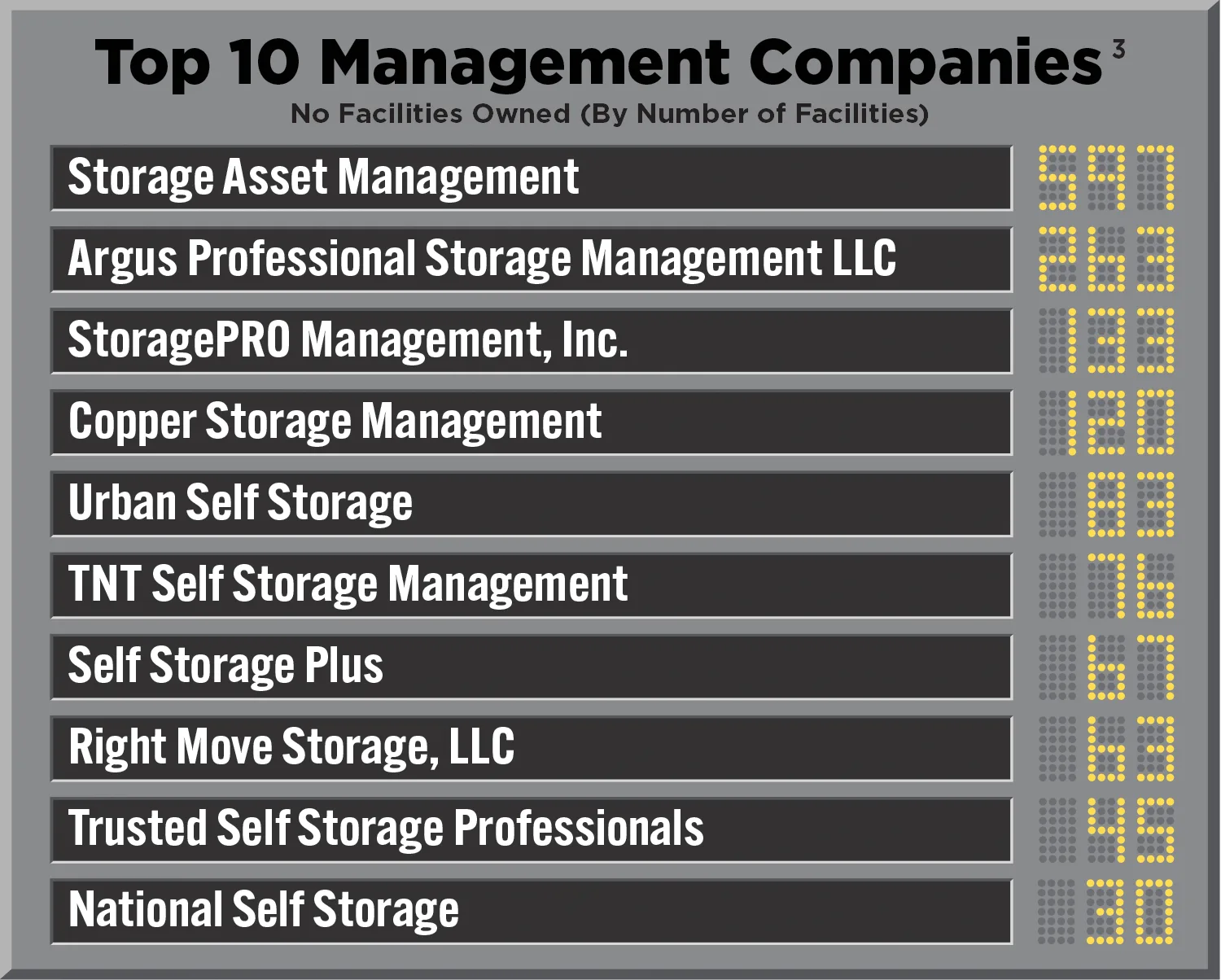

uccessful self-storage businesses are lean. They have to control costs in order to keep street rates attractive while maximizing net operating income (NOI), an approach that doesn’t exactly encourage new technology adoption. There’s little appetite and no budget for experimentation; if a technology tool can’t offer concrete, near-term ROI, most operators aren’t interested.
This dynamic has led to an industry with strong uptake for point solutions like surveillance, access control, and tenant management, but deep skepticism about more complex or cutting-edge IoT applications. The self-storage industry now lags far behind other commercial real estate verticals in the adoption of smart space technologies. While integrated building automation systems encompassing HVAC, leak detection, occupancy sensors, access control, security, energy management, and more have become commonplace in office, hospitality, and industrial properties, self-storage operators have preferred to keep their businesses relatively low-tech.
In 2024, the cracks in the traditional approach are starting to show. Shifting market forces are eroding the revenue potential of stripped-down storage sites. To remain relevant, operators are going to have to change their definition of “lean” from “simple and low-tech” to “automated and optimized.”
In response to this oversupply, more experienced developers have slowed down acquisitions and expansions. Instead, they’re looking inward, seeking opportunities to reduce costs and maximize NOI by implementing new technology solutions, in many cases working toward “touchless,” unmanned sites. If they must compete with a flood of cheap, new sites, they’ll do so by providing a modern experience at the best possible price.
If inventory hadn’t forced the issue, demographics would have. Over half of today’s renters are digital natives, and according to SSA’s 2023 Self Storage Demand Study, they shop around for storage units more than past generations. Tenants are looking for price and convenience, but that’s not all; millennial and Gen-Z renters are willing to pay extra for smart features like in-unit alarms and monitoring, humidity and climate controls, and 24/7 access.
Vantiva’s own market research has found that 40 percent of renters would pay more for instant alerts of hazards like leaks or fire. In-unit monitoring and HVAC also rank highly as features for which renters are willing to pay extra. Rolling out these features site-wide and baking them into the street rate may hamper operators’ ability to compete in a crowded market, however.
A smart space solution allows operators to turn highly valued features on and off for specific tenants/units. To turn on zoned climate control and temperature monitoring or gain access to the site after hours, tenants upgrade to a higher monthly rate. There are no free riders. Instead of, for instance, offering site-wide air conditioning and raising rates incrementally, operators can charge the tenants who actually value climate control what it’s worth. A zoned system is also exponentially more efficient and cost-effective. This approach keeps street rates enticing to new renters while growing revenues over time.
Parks Associates, a market research and consulting company, has found that an estimated 60 percent of the self-storage facilities in the U.S. are over 30 years old. That means they predate the widespread availability of Wi-Fi, and it shows. Aging storage sites are riddled with network blind spots where you can’t receive a call, let alone monitor a camera. Traditional self-storage building materials exacerbate the issue; steel and concrete blocks reflect and absorb Wi-Fi frequencies, making the typical self-storage wireless coverage map look like Swiss cheese. Many sites have strong wireless network access in the front office but nowhere else.
In order to adopt the IoT solutions they need to navigate the current market, self-storage sites need to fortify their wireless infrastructure. They need a reliable blanket of connectivity that works in every corner of their site and accommodates both new and legacy devices.
To be sure, a lot of consumer IoT devices, like smart speakers and doorbells, just use Wi-Fi. Wi-Fi doesn’t always make sense for connecting devices on a commercial scale, though. In a smart self-storage site, there may be hundreds of sensors, thermostats, and other devices. If all these devices try connecting to Wi-Fi, the channel gets too crowded; important real-time notifications may be delayed or not delivered at all.
Instead, many IoT devices rely on much lower frequency, “sub-Gigahertz” networks designed for large numbers of devices and big coverage areas. These signals are better at passing through materials like concrete and steel, and they take less power to transmit. Using this connectivity technology, devices like sensors or locks can often run on a single coin cell battery for a decade. Sometimes, the wireless devices themselves even act as a network repeater, strengthening your wireless network coverage as you install more devices.
Just like you need a Wi-Fi router to create a Wi-Fi network, you typically need a dedicated hub to establish communications among devices using a sub-Gighertz protocol. Most sites will need a mix of sub-Gigahertz, Wi-Fi, and Bluetooth to monitor and control their IoT subsystems. That means they will also need a multi-protocol network infrastructure—a common practice in other commercial real estate verticals. The technology and network design best practices are mature; operators just need an experienced partner to implement them.
By installing a multi-protocol network infrastructure, you can blanket your site in wireless connectivity for all the main IoT protocols. This preparation will allow you to rapidly deploy and scale IoT solutions and services to meet the rising demand from digital native tenants. You won’t just be saving time on future network upgrades either. With sub-Gigahertz networking capability, you’ll be ready to support sensors, cameras, and other IoT devices with no external wiring or power supply. With no additional infrastructure required, the upfront cost of rolling out new IoT point solutions drops dramatically.
Right now, those at the top of the self-storage industry are looking to IoT solutions to differentiate and optimize their businesses for the coming economic squeeze. In order to seize that opportunity, however, operators must first shore up their wireless networks to support these applications. With a site-wide, multi-protocol approach, operators can begin expanding their IoT ecosystems, creating a modern, data-driven enterprise.

n the self-storage industry, 2024 has ushered in a challenging landscape where fluctuating rates and occupancies below our accustomed levels necessitate a return to fundamental strategies. As many operators engage in aggressive pricing tactics to attract customers, it becomes imperative to reassess the core metrics that drive operational efficiency and success. Each year, for the past 25 years, M. Anne Ballard, Universal Storage Group’s president of marketing, training, and developmental services, has compiled data from our managed and consulting sites, as well as from industry experts and publications, to present the year-end review. This year, Lou Barnholdt and I aided her in gathering and interpreting the data to carry the torch going forward and continue this highly anticipated presentation. In it, we showcase many of the metrics our managers and area managers evaluate on a daily, weekly, monthly, or yearly basis. These metrics are essential for continually growing our owners’ same-store sales and net operating income (NOI). By homing in on these essentials, owners can navigate the current market dynamics with greater precision and resilience. While there are numerous metrics to consider, let’s get back to the basics with 10 of the management metrics that spell success: same-store sales increase (SSSI), net operating Income (NOI) increase, gross potential, street rates, insurance sales, box sales per lease, fees waived, delinquent percentage, economic occupancy, and customer rates. It’s important to note that the names of the reports I reference may vary depending on the software you use, but the process remains the same.
Next on the list is late fees. Calculate the ratio of your collected late fees and other fees to your waived late fees and other waived charges. This ratio should be less than 10 percent. By keeping waived fees below this threshold, you ensure effective fee management and maintain revenue integrity.
To maintain a well-balanced operation, it is essential to measure three types of occupancy metrics: the percentage of occupied units, the area percentage, and the actual occupied unit rates (economic occupancy). Ideally, these figures should align closely with one another. Regularly monitoring and ensuring these occupancy rates are in balance will contribute to more efficient and effective property management and use of the units you have to offer.
- Frequent Communication – Call delinquent tenants two to three times a week to remind them of their overdue balances.
- Automated Reminders – Invest in services that send text notices to tenants, allowing them to pay with a simple click.
- Online Auctions – Partner with an online auction company and hold monthly auctions to recover losses.
- Settlement Agreements – Be open to accepting settlement agreements (preferably 50 percent or more of their balance) to resolve overdue balances quickly, and then move them out.
These proactive measures can help maintain financial health and reduce the burden of chasing down delinquent payments.
Several factors should influence the decision on rate increases, such as occupancy levels and variance amounts. For those new to managing this aspect of income, implementing increases in batches is advisable. Not everyone will be pleased with the rate hike, so it’s essential to empower your manager to negotiate with customers, while still maintaining the increase to some extent.
It’s crucial to monitor customer rate increases monthly and keep a daily check on street rates. Although this might seem time-consuming and tedious, software tools are available that can automate rate scraping and allow you to set parameters for automated adjustments, making the process more manageable and efficient.
By adopting a more systematic approach, you can ensure fair and gradual rate adjustments that contribute to customer retention and satisfaction. Empowering your management team with the authority to handle negotiations can also mitigate potential dissatisfaction, ensuring a balanced approach to revenue management and customer service.
These metrics are just the tip of the iceberg. Regularly analyzing them keeps your business on a growth trajectory and highlights areas needing improvement. Owners and managers must understand key performance metrics and their implications. Continuous learning through industry publications, webinars, and association meetings is invaluable. For more insights into these and other metrics, visit our website, UniversalStorageGroup.com, and read the 2023 Review under the Resources tab. Here’s to a prosperous 2024!
PLATFORM TO RUN YOUR BUSINESS
Everything you need, from the fastest storage websites in the industry to property management software that makes running your business a breeze.
Automate your operations, save time for you and your managers, and increase revenue.
The fastest websites in the self storage industry, to give your customers a seamless online rental experience.
A full service payment solution, purpose-built to cover the payment needs of self storage operators.
A turnkey brand solution to streamline your operations and compete with the REITs.
Membership with access to nationwide vendor discounts, consultants, a community, and more.
Protection programs with industry-high revenue sharing.
A team of marketers with decades industry experience to get you found, win more customers, and grow occupancy.


ntering into a contract should be a transaction that’s beneficial to both parties. Within the industry, you provide self-storage facilities in exchange for payment.
Granted, there are additional elements to keep in mind, such as conditions of use, contract length, and renewals; and to be legally binding, both parties must fully understand these terms.
In today’s day and age, where most transactions are done electronically, certain software platforms have become popular (DocuSign, PandaDoc, and DropBox Sign, to name a few). Something else that’s prevalent is to simply click boxes to demonstrate that tenants agree to the terms. This type of online consent is known as a clickwrap agreement. But are there any hurdles to enforceability when placed on self-storage websites? And what’s the difference between a clickwrap and browsewrap?
Browsewrap agreements exist when a website states that users agree to their terms and conditions simply by using the website. Generally, these types of agreements are unenforceable because users haven’t expressly agreed to anything. On the other hand, clickwrap agreements require specific steps that communicate the user’s consent. For example:
- Are users warned that clicking on such a checkbox means being bound to terms and conditions?
- Are the terms clear enough for a reasonable person to understand them?
- Are they easy to read (e.g., font size and color of text against color of background)?
- Are there clear instructions (e.g., having to scroll all the way to the end of the agreement or receiving notification that the user must agree to the terms prior to being allowed to click through to the next page)?
In a nutshell, a clickwrap agreement involves specific steps a person must take that demonstrate that they knowingly entered into a quid pro quo transaction. If your self-storage website includes online leases with this type of format, you should implement clickwrap best practices. This will maximize the likelihood of prevailing in court should a dispute arise with a tenant.
Make it obvious it’s an agreement.
Make it very clear to every single person entering the site that the text on the screen is listing terms and conditions. You can do this by including a bolded header, by having different colored text in the required sections, or by implementing a scrollwrap (a pop-up agreement that interrupts the user, informing them of the terms of the agreement. The user would then need to scroll to the end of the pop-up and click on a checkbox to continue with the transaction).
Implement a user-friendly layout.
Every single website and landing page should prioritize user experience. Anything that’s too cluttered or has convoluted navigation will confuse the reader. And courts will definitely look at a page’s layout to determine whether the terms were presented clearly and whether a reasonable person would’ve understood that they were consenting to them.
Don’t allow users to proceed without clicking on the checkbox.
While a significant portion of the population tends to skip long agreement terms, making them unable to move forward with a transaction unless they click on the box means that they are aware of their existence.
List all relevant laws and regulations, as well as legal consequences.
Even someone who’s in a hurry to enter into an agreement will pause if there’s a statement along the lines of: “I certify that the information above is true and correct. Providing false information constitutes XYZ violation that could result in XYZ fines.”
Provide users with a copy of the agreement.
Since transactions are meant to be mutually beneficial, both parties should have easy access to the terms of the agreement. This also makes it a lot easier for either one to refer to it in the event of questions or a potential dispute. You can either email it to them or make them easy to find on your website and/or their online account.
If the agreement is modified, memorialize it in writing.
If you have a subsequent interaction that modifies any of the terms of the agreement, direct the user to an additional clickwrap agreement where they get to check a new checkbox next to the new terms. Make sure it’s time stamped and that they receive a copy of this addendum to their email or online account.
Regardless, Amazon sought to get the case dismissed and to compel arbitration instead, based on their conditions of use. As evidence, Amazon showed that the screen to complete the purchase indicated: “By placing the order, you agree to Amazon.com’s privacy notice and conditions of use.” The conditions of use were hyperlinked in blue, and Nicosia had to click on a box stating that he agreed to those conditions prior to being able to click on the “complete purchase” button. The question presented in court was whether such statement and the hyperlinked terms were sufficient to incorporate them into the purchase agreement.
The court ruled that Nicosia agreed to the terms in two ways: When users sign up for an Amazon account, they are provided with notice of the conditions of use. On both instances that Nicosia purchased the weight loss product, he clicked on a box stating that he was agreeing to the conditions of use, which were conspicuously hyperlinked in blue lettering.
Like many companies, TransUnion sought to dismiss the lawsuit based on the claim that its website informs users that disputes must go to arbitration instead of proceeding as lawsuits.
The court ruled that Sgouros did not agree to arbitration because there were no steps to show that he saw the 10 pages of terms and conditions. Nothing indicated that the text continued beyond an initial box with information, or that Sgouros needed to scroll all the way to the end of the page. Since a reasonable person wouldn’t have been able to tell that the terms and conditions continued for 10 pages, the agreement was not enforceable.
This is a clear reminder of the importance of a user-friendly layout. It also highlights the need for guardrails to prevent users from proceeding to the next step without acknowledging they have seen all the terms.

n this opaque environment of low transaction volume, cap rates are not showing much change. Market sentiment shows confidence in the sector, despite protracted expectations on the timing of interest rate cuts by the Fed (most estimating a slight rate cut in Q4 2024). As an example, the average cap rate increased 8 basis points in Q1 2024 over Q4 2023 to 5.83 percent. As of May 28, self-storage REIT stock pricing is showing a trailing 12-month decline of 3.54 percent, but 2024 year to date have declined 12.98 percent. Such a wide variance in range in the public market and low sale activity in the private market suggests investors are waiting for signs of clarity (such as lower interest rates).
We also note a 16 basis point increase to terminal or exit cap rates, suggesting slightly more emphasis to cash flow. Previously, we have seen cash flows weighted 60 percent or more to appreciation. Compressed discount rates remain, showing a small gain of only 3 basis points this quarter. Key performance indicators are shown in the Segmentation by Investment Quality table.

As an example, asking rents declined in 2023 but actual rents continued to increase. An analysis of the asking versus actual rates was put together by Aaron Swerdlin and his team at the Newmark Self Storage Practice from PSA Quarterly and Supplemental Public Filings (summarized in the Public Storage Same-Store Activity chart).

However, we note that these reflect top operators with best-in-class technology and algorithms to support robust increases. Our experience in the sector indicates regional and small operators have been achieving annual ECRIs in the 10 to 15 percent range over the past few years, but that data includes post-COVID rate increases. As an example, an examination of a regional portfolio operated privately, comprised of 29 properties in six states, indicates a variance of asking and actual rents of 9 percent in 2023. This demonstrates that ECRIs are trade area specific and can vary widely.

n the world of advertising, there’s no one right time to speak to customers. Heightened visibility creates that top-of-mind awareness so that when a client is in the market for your product, you’re the one they’ll think of first. In the world of self-storage, who is your client? Who comprises your target demo? From boomers to millennials to the newer generation’s consumer profile, relevant data can help you identify—and capture—your target demographic. Because depending on where you’re located, your client base will change.
Is being within a business community preferable? Or is it better to be close to a residential district? Data highlights pros and cons of each, as well as how to maximize your exact location. While studies reveal that residential customers comprise the majority of the tenant mix (80.2 percent according to the 2024 Self-Storage Almanac), commercial/business customers can provide a robust business due to longevity and reliability of payment if you’re located in a business district. In fact, they represent 13.2 percent of the tenant mix—an approximately 10 percent larger segment than military or student renters.
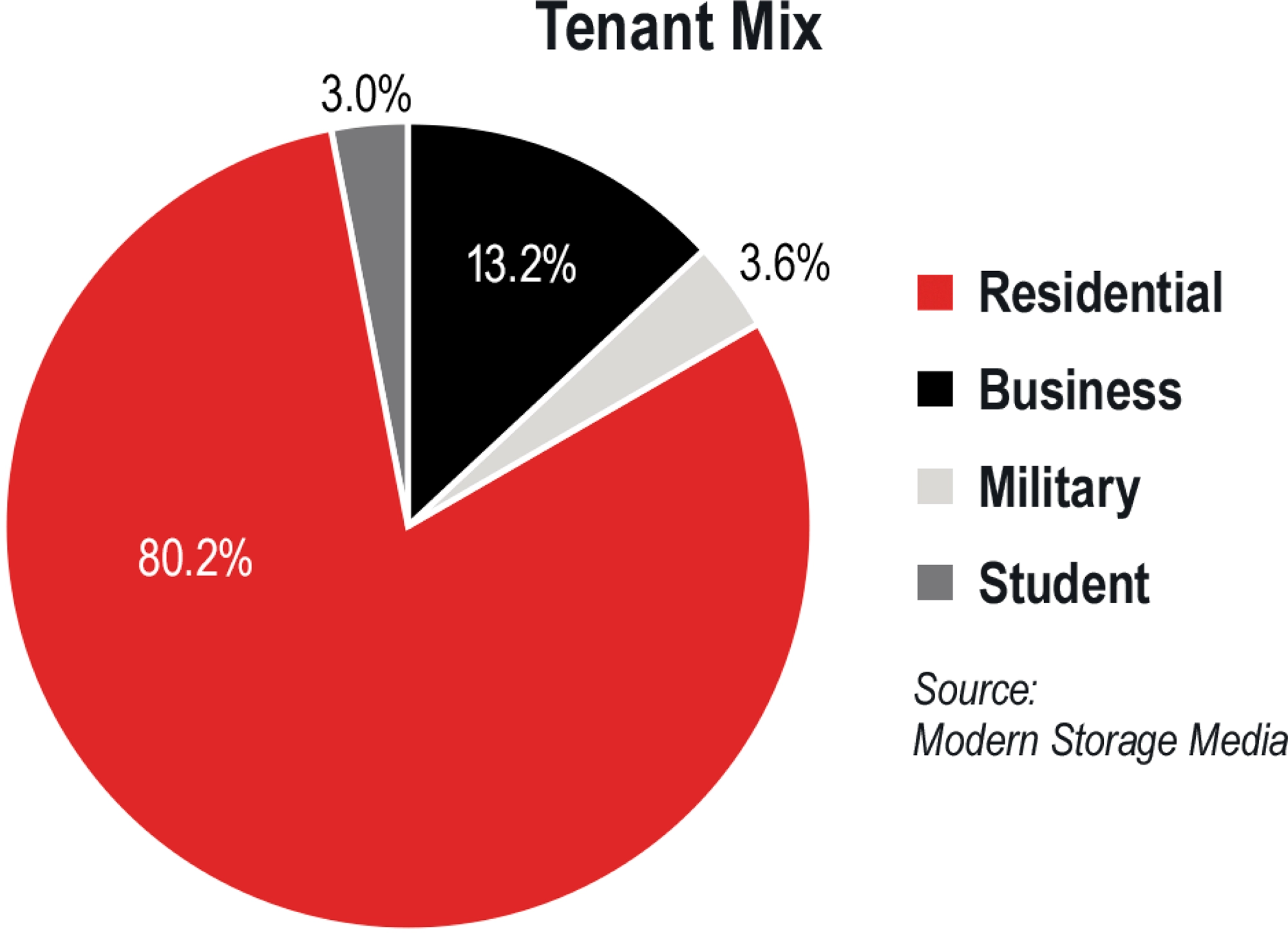
Source: SSA 2023 Self Storage Demand Study

Source: SSA 2023 Self Storage Demand Study
Overall, most customers still value several things:
- Round-the-clock convenience,
- Digital access,
- Climate-controlled options,
- Competitive pricing, and
- Pest control.
By taking a more in-depth look at today’s consumer profile, from age to community, timelines, and expectations, data helps facility owners set themselves apart in an increasingly competitive market.


he U.S. Bureau of Labor Statistics reports that approximately 20 percent of new businesses fail in the first year. Even more startling is the agency’s statistic that only half make it past the five-year mark. Reportedly, there are three main reasons businesses fail: no market for the product or service (42 percent), not enough capital or cash flow to sustain the business (29 percent), and poor teamwork and communication (23 percent). It’s also been suggested that businesses founded on friendship are less likely to succeed.
Contrary to that opinion and beating those entrepreneurial odds by having complementary competencies, considerable capital, and ample demand, Trojan Storage, which was established by childhood acquaintances John Koudsi and Brett Henry, is approaching 20 years in business. And thanks to this dynamic duo’s future-focused investments and airtight operations, Trojan Storage has plans to continue growing its portfolio while making meaningful contributions to the industry.

he U.S. Bureau of Labor Statistics reports that approximately 20 percent of new businesses fail in the first year. Even more startling is the agency’s statistic that only half make it past the five-year mark. Reportedly, there are three main reasons businesses fail: no market for the product or service (42 percent), not enough capital or cash flow to sustain the business (29 percent), and poor teamwork and communication (23 percent). It’s also been suggested that businesses founded on friendship are less likely to succeed.
Contrary to that opinion and beating those entrepreneurial odds by having complementary competencies, considerable capital, and ample demand, Trojan Storage, which was established by childhood acquaintances John Koudsi and Brett Henry, is approaching 20 years in business. And thanks to this dynamic duo’s future-focused investments and airtight operations, Trojan Storage has plans to continue growing its portfolio while making meaningful contributions to the industry.
By 2005, he was running 12 self-storage facilities for Self-Storage Management Company (SSMC) and supervising a staff of 46 employees. His proficiency enabled him to increase same-store net operating income (NOI) of that portfolio by more than 35 percent.
At the same time, Koudsi, a multi-disciplined entrepreneur, was providing consulting services in the wealth management space through an affiliate organization. He had a client in the self-storage industry, and thus understood the business from a financial reporting perspective.
After seeing P&L statements showing the value Henry had created, the duo established Trojan Storage, enabling them to do what they do best: add value in fragmented industries. Henry became president of Trojan Storage, which effectively included the role of chief underwriter as well as the day-to-day operations. Koudsi took on the role of forming the capital structure, managing the debt strategy, and strategic planning. Trojan Storage was funded by a group of investors consisting of clients of the affiliate wealth management business and high-net-worth individuals.
“We applied our management process to a site that lacked it,” Henry says, elaborating that their management process includes launching a new website, utilizing professional advertising, implementing effective rate management, training staff, and renovating buildings. “This acquisition allowed us to go fully through the process and most importantly prove the strength of our operation processes. It allowed us to go through the process of acquiring a site, which helped us launch our next 15 acquisitions from 2007 to 2015.”
“We understood that the only way to create value was to acquire distressed assets that had the capacity for growth,” Koudsi adds about their preference for properties in need of some elbow grease and TLC.
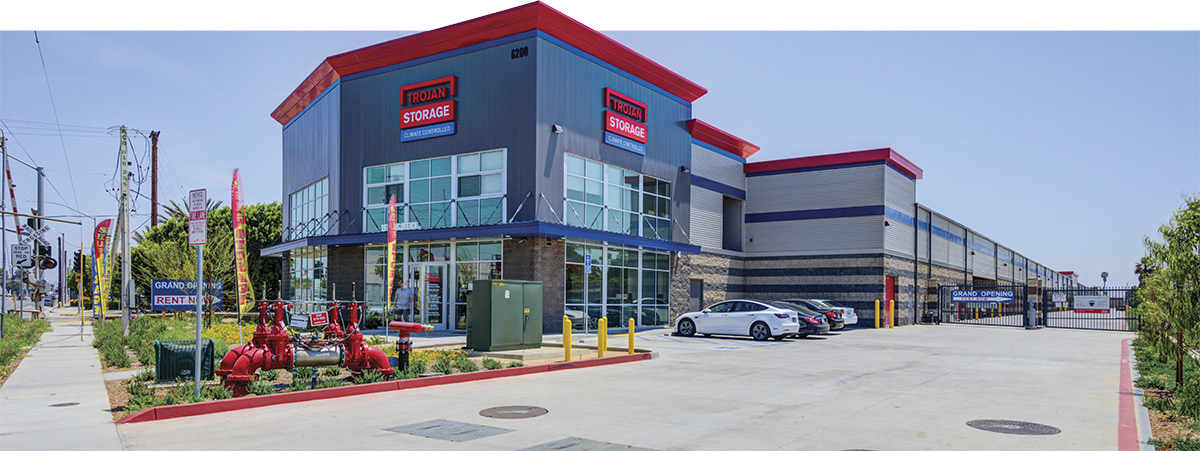
Approximately six years after their first acquisition, the partners branched out and began growing Trojan Storage’s portfolio size through development. Adding square footage to a handful of locations spurred them to consider developing their own ground-up self-storage facilities so they could build to their five-star standards instead of trying to make an existing facility work with their maturing brand.
“We learned over the first seven to 10 years that acquiring only existing facilities limited our deal flow and demographic selection,” says Henry.
“Development allows us to be more intentional regarding demographics and barriers to entry,” says Koudsi. “Through development, we can build a Class-A storage in strong markets.”
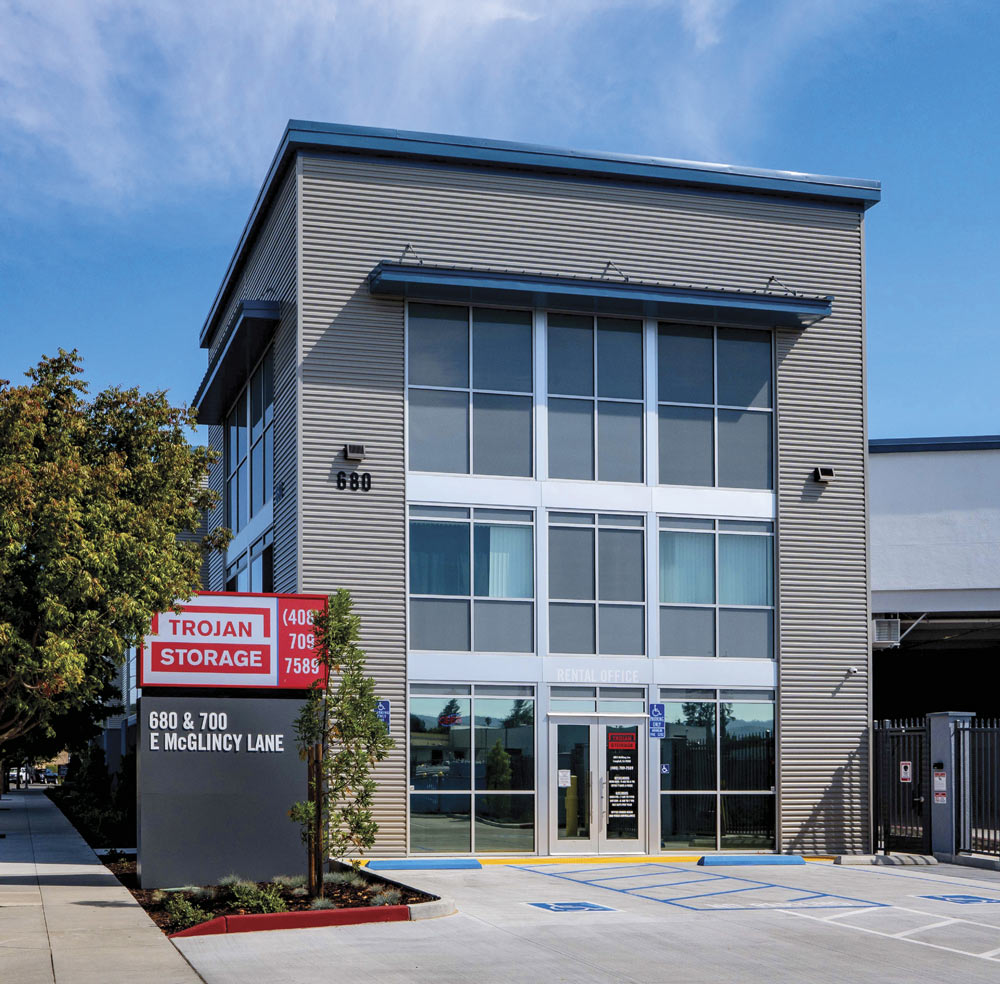
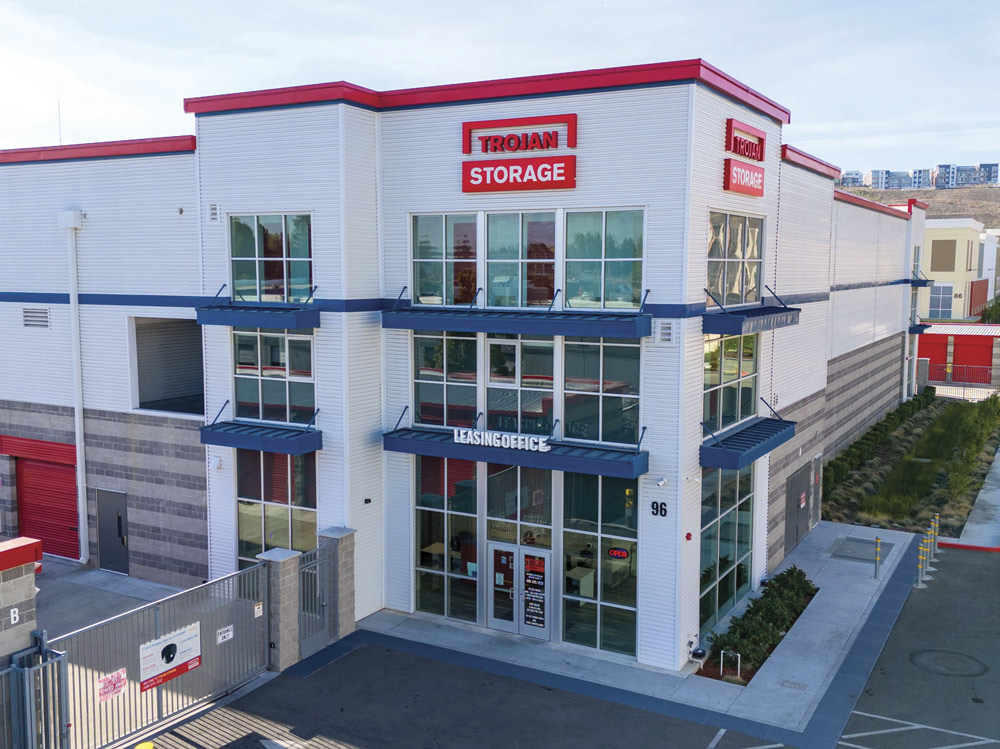
In 2015, Koudsi began putting together a fund for self-storage development. Five ground-up Trojan Storage facilities were developed with the money raised through that original fund. “At the end of the day, we allow the environment to guide our decision making,” Koudsi says, “and pursue those opportunities that squarely meet our underwriting standards.”
The following year, Henry and Koudsi made the decision to sell a portion of their portfolio to a REIT for approximately $245 million—more than triple the amount they spent to acquire the properties, which was around $76 million (that cost included one of their original sites in Cleveland, Ohio). The 15 Trojan Storage facilities comprised approximately 1.07 million net rentable square feet and 10,392 units. They included one in Arizona, 10 in California, two in Colorado, and two in Minnesota.

After the sale, the buyer asked Henry and Koudsi to manage 10 of the 15 properties from the portfolio on their behalf. Although they had not intended to become a third-party manager, they struck a deal and continue to operate those Californian sites to this day.
“One of the key benefits of managing that portion of the portfolio was that it provided the opportunity to keep key employees that had been integral in helping us build our business,” Koudsi says.
“We have a great relationship with Harrison Street,” Henry adds. “It developed through the sale. We continue to generate revenue to maintain corporate staff and secure data points for different markets. It helps us see trends and opportunities.”
Currently, Trojan Storage manages 17 self-storage properties for Harrison Street, owns 27 facilities, and has another five under construction that will open soon—most of which are located along the West Coast, from Seattle to San Diego; however, they do have a few in Chicago and Newark, N.J. Trojan Storage has developed (including properties under construction) approximately 1.87 million square feet of storage in San Jose, Los Angeles, Sacramento, Portland, and Tacoma within eight years. They also have several other self-storage facilities in various stages of development in California.
“It has to be painful to extract value,” Koudsi jests. “And building in California hurts.”
Indeed, building in the Golden State requires ample patience, as it can take years to obtain permits and complete a ground-up property due to its stringent building codes, restrictions, and regulations.
Clearly, their perseverance is paying off. Once construction is complete on all their sites, Trojan Storage will own approximately 3.11 million square feet and 29,000 units in highly desirable areas. When the 19 sites they manage are factored in, they will own and operate 4.5 million square feet.
“The development business is challenging, and merchant builders have made it more difficult by saturating markets with new supply; Demand has decreased over the last couple of years, as many operators and developers assumed that the COVID demand surge would continue in perpetuity,” says Koudsi.
For those contemplating self-storage development nowadays, Koudsi emphasizes the need for industry research on both macro and micro levels to avoid oversupply. “We don’t create demand,” he says, reminding potential developers to focus on two significant demand drivers: population growth and wage sustainability. “We must understand how markets can change.”
In general, the most worthwhile markets have new employment opportunities to attract new residents and a lack of storage space to accommodate the growing population. Henry also suggests looking for possibilities in markets with high barriers to entry, as developing where fewer developers take the time to build will produce a “bigger reward.” He says, “It really comes down to trying to do it where other people fundamentally aren’t.”
Despite experiencing difficulties and delays with their own development projects, 2024 is on track to be an exceptional year for Trojan Storage. They have five new Class-A, climate-controlled facilities opening between February through September: a 113,500-square-foot property in San Jose, Calif.; an 84,255-square-foot property in Toms River, N.J.; a 121,442-square-foot property in Englewood, N.J.; an 86,604-square-foot property in Puyallup, Wash.; and a 165,589-square-foot property in Elk Grove, Calif. All but the Puyallup location are multistory facilities.
“We have built not only a successful operational team, but also a very capable development team. We are spending more time on development now than acquisitions, due to our opinion that the sellers have not yet adjusted to the new normal,” says Koudsi, who reveals their desire to continue developing in the Bay Area and Southern California.
“It is more important than ever to answer the phones, respond to text messages/emails,” says Henry. “We intend to continue to build this platform to offer it to not only our owner properties but also our third-party managed platform. We are intentionally selective with third-party contracts as we want to ensure strong alignment with those operators.”
Other improvements are on the way later this month when Trojan Storage’s entire portfolio transitions to QuikStor’s property management software. The company has been investing in QuikStor’s software and assisting with its creation. Through beta testing and feedback, Trojan Storage helped set the software’s rules, reporting, and more. Henry points out that QuikStor’s “fast, flexible, and responsive” software will be available to the entire industry in one version—the same version that Trojan Storage will be using. “We believe in alignment,” he says, as a QuikStor investor and user.
“As high-level self-storage operators, we understand what software developers do not,” says Henry. “We know what operators need because we are experienced operators. We have three planned phases for the next 12 months and then a road map to make our software the fastest, most robust, flexible software in the industry. It will take Trojan about 30 to 40 days to implement the software in all of our facilities.”
Finally, they’re also in the process of developing BreKo, a tenant protection program that will integrate with QuikStor. It’s slated to be available this summer as well.
“It’s another seamless vertical,” Koudsi says about the program. “We’ll create more opportunities for other operators and ourselves.”
When asked about how these public products will impact competition, neither Henry nor Koudsi was concerned about losing their market share. “We believe there is great value in improving efficiencies and profitability for others,” says Koudsi. “We see this as making the entire pie larger. We want the industry to do well.”

Somewhat recently, Henry and Koudsi, who had been working from separate offices, elected to establish a company headquarters in El Segundo, Calif. While it is a slightly longer commute for Koudsi, he loves the atmosphere and company culture they’ve created. As a matter of fact, he calls it “one of the best cultures” he’s ever encountered.
At the core of the company’s culture is the friendly relationship of its founders—one that was built on mutual respect and trust. “We’ve been in the business about 20 years, Koudsi says, and we’ve never had an actual argument. We know what each other brings to the table and we do what’s best for the business. We are able to leave our egos at the door and appreciate our complimentary skill sets and varying leadership styles.”
Trojan Storage currently employs 45 corporate team members and 115 facility-based team members, but they maintain a closeness through fun outings like weekday bowling. The founders also promote professional growth by taking the team to conventions and encouraging them to get involved with the various self-storage associations. Most recently, two of Trojan Storage’s employees were speakers at industry events.
“We enjoy watching our leaders lead and the entire team reach their professional goals,” says Koudsi. “Guided autonomy is the goal.”
He goes on to say, “Our employees have a purpose, and we are grateful for minimal turnover,” which is quite the accomplishment nowadays as it’s no longer easy to find or retain labor.
he results are in! As those of you who took our recent reader survey know (thank you for participating), MSM did things a little differently this year. Along with asking questions about our publications to help us continuously improve and write about the topics that matter to you, we asked some questions about the state of the industry, challenges and opportunities on the horizon, and more. It’s our pleasure to present to you a summation of what your colleagues in the self-storage universe had to say.
See Respondents pie chart

See Number of Facilities bar graph

See Location chart

See Industry Headwinds bar graph

See Industry Tailwinds bar graph
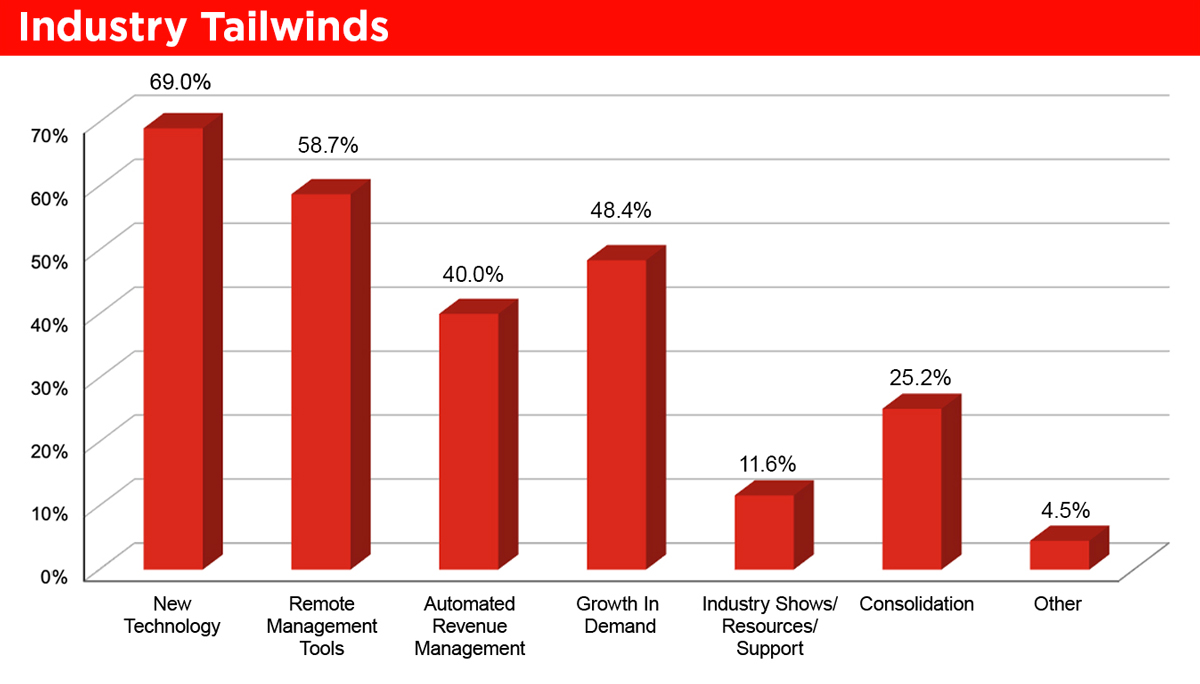
AI, a concern for a handful of respondents in the previous question, was mentioned as a plus here: “AI acceptance is growing,” wrote one respondent.
See Occupancy pie chart

See Automation pie chart
Online rentals and gate access are virtually tied at just over 60 percent each when it comes to the areas of the business that are automated. However, online auctions, revenue management, and door access are not far behind.
See Automations Utilized pie chart

See Challenges bar graph

When it comes to marketing, one respondent followed up by saying that “SEO and PPC are very expensive to outsource and time-consuming and difficult to keep in house.”
Another respondent found managing tenants to be complicated due to the storing of illegal or unallowed items and demands for refunds. “Unfortunately, customers are going to try to store what they want to and not what is acceptable. Also, if one company offers refunds for unused days, customers think every company is supposed to do that even when the lease states differently,” wrote the respondent.
Finally, one vendor is weary of “unsophisticated clients,” possibly hinting that some operators are not keeping up with technology, as 29 percent of respondents admitting it was a challenge.
See Data Divide chart
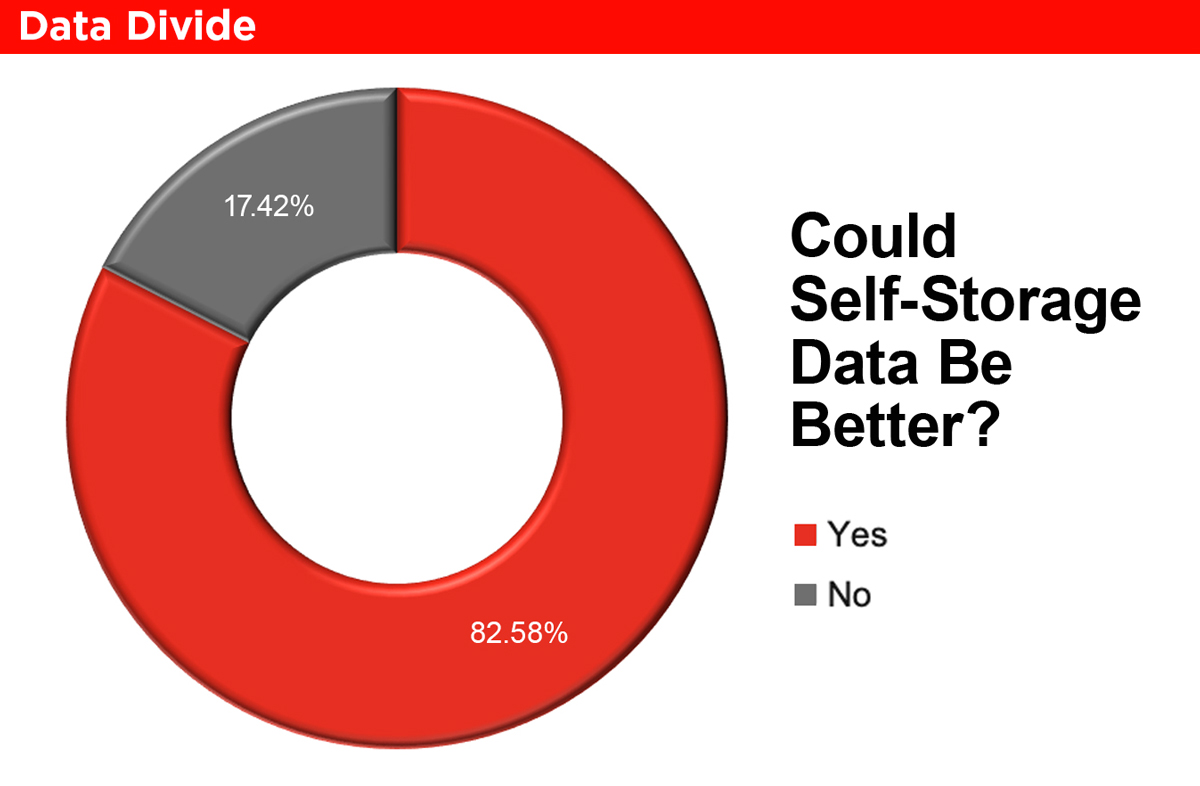
“If you could choose to automatically and anonymously share your data with a secure repository via your property management software to improve the overall industry dataset in exchange for reporting on your market, would you?”
See Sharing Data chart

- It’s not safe; I don’t want to lose my competitive edge.
- I’d love to see it, but I cannot get unanimous partner consent.
- I don’t trust any entity to be impartial.
- Too many people will have access to it.
- My detail and innovation are my edge, and I don’t want to lose it.
- I’m happy to share information but not via automation due to personal data exposure.
- There have been too many data breaches out there.
- It’s too risky to potentially expose our data.
- Privacy … It is privileged information.
- I would want to know who I’m sharing with.
One respondent stated that they don’t use property management software, while another simply wrote, “I don’t want to share.”
We’re not looking to solve the industry’s problems—yet! For now, we’re just presenting the results of our reader survey. However, we’re listening, and we’ll be following up with the stories you want to read and the questions you want answered. Thank you for reading!

When it comes to all things MSM, from our monthly Messenger and our annual Self-Storage Almanac to our website, newsletters, and more, we’re averaging four out of five stars! Would we like to have five stars? Absolutely! We know there’s always room for improvement, and it’s something we’re laser-focused on.
We appreciate all your suggestions on how we can make our publications better, and for sharing the topics you’d like to see more coverage on. You can expect to see stories on them in future online and print stories.
Of course, we also enjoy reading all the words of encouragement:
“I love your magazine just the way it is!”
“In the past year, your coverage has expanded wonderfully!”
“Your topics are more in-depth than other industry publications.”
“Keep doing what you’re doing!”
“You’re doing a great job!”
On behalf of all of us at MSM, thank you for your readership and support, and we hope you enjoyed your $5 gift card. Just for fun, here’s one last chart on the card redemptions. Our readers clearly love Amazon and Starbucks!
ith many cities enacting stricter guidelines for self-storage development, the semantics of planning and zoning are constantly in flux. What are the pitfalls? How can you avoid them? How can self-storage developers ensure zoning and planning approval? From well-thought-out design and landscaping to knowledge of surrounding neighborhoods and vested interests, there are many factors to consider. Modern Storage Media spoke with experts around the country to strategize and problem-solve when navigating the planning and zoning process.
Security plans, market analysis, and clear evidence of inspection logistics demonstrate know-how and consideration of the surrounding community. Include color renderings of landscape design and any aesthetic touches to help flush out your site plan, thereby increasing public perception.
Getting the right team members for that early engagement is vital to the process, says Meinecke. “We advise clients to hire a local civil [engineer] with experience in the jurisdiction to help streamline the efforts,” he says. “We’ve been brought in late to projects with inexperienced team members, which then extended the timeline of the process and caused a lot of “re-work” to the project. To that end, developers often hire land use attorneys or expeditors to take the guesswork out of the process and limit the municipal back and forth.
Similarly, Denise Nunez of Phoenix’s NAI Horizon underscores the importance of working with a seasoned team of experts. “The biggest mistake I see, time and time again, is not hiring experience. And while there are certainly qualified knowledgeable groups out there building beautiful products, it’s those who are new to our asset class, those who we may see expanding from industrial and multifamily or some other area, who are making fundamental mistakes,” she says. “It makes a difference when the general contractor has built 100-plus of these projects. That also goes for architects, project managers, and brokers.”
BUILDING CONSTRAINTS AND OVERCROWDING
Design constraints, says Calderon, can pose a significant challenge to self-storage developers. “Striking a balance between aesthetic expectations and zoning requirements can be tricky.”
A quick call to the city planner can determine whether there’s a path toward approval. If not, it may be time to expand your vision. Nunez recommends creative problem-solving like making the self-storage facility just part of the plan. “Developers are getting more creative, taking out large parcels of land and including self-storage as part of the overall site plan for development. One example is Phoenix’s The Grove at 44th Street and Camelback,” she says, which includes the Globe Ambassador Hotel, office space, high-end apartment residences, first-class restaurants, and a 70,000-net-rentable-square-foot, climate-controlled self-storage facility “way in the back corner.”
INEXPERIENCED INSIDERS, CHALLENGING OUTSIDERS
Infrastructure changes within planning and zoning departments are also giving developers pause. “Entitlement timelines have lengthened significantly, and post-COVID shifts in staffing mean project reviews are handled by less experienced staff members,” says Meinecke. “We have seen an increase in the lack of organization and communication in almost all jurisdictions we have dealt with in the past five or so years.”
Another challenge is the jurisdictions themselves; from building requirements to project timing to the overall perception of self-storage facilities, the general public can be a tough crowd. “One of the emerging challenges is the increased opposition from the community,” says Calderon, “with residents often voicing concerns about traffic, aesthetics, or perceived negative impacts on their neighborhood.” It’s important to highlight the facility’s compatibility with the surrounding setting, he advises, to increase buy-in.
Homeowner associations and community activists are uniquely positioned to affect local politics, and building positive relationships with these interested parties creates better understanding. Get to know the constituents and meet with community decision-makers before a permit hearing. Talk about your design, show them renderings, listen to objections, and respond with solutions.
TOP MISTAKES AND POSSIBLE CURES
According to Meinecke, many mistakes occur during the due diligence phase. “During this time, it’s important to get comfortable with the city/county requirements and their take on the project at hand,” he says. Simply put, mistakes include not asking the right questions, hence staying uninformed. Ignorance will sabotage the best-laid plans.
NOT UNDERSTANDING ZONING REGULATIONS
“Developers make several common mistakes during the early zoning stages,” says Calderon. “One of the top mistakes is not conducting sufficient research into local zoning regulations and requirements, which can lead to costly errors.”
You need to know how close you can be to another storage facility, how many parking spaces are needed, and whether your facility needs to join an industrial park or it can be its own destination. Ask questions and find answers, either online or in person.
“Again, utilize the services available at the city,” says Meinecke. “Do the pre-application conference. Meet with planners and city officials. Study everything about the target market, surrounding residential and retail establishments, prevailing traffic, and quality of storage competition. Are there new projects on the horizon? How high are the barriers to entry in the market?”
Get to know the community. Its members have opinions; they’ll be impacted and they may become your customer base. What matters to them should matter to you. “Ignoring the local community’s input is another common mistake, which can result in opposition or delays during the approval process,” says Calderon and the RKAA team. “Design discrepancies, such as creating a self-storage facility that clashes with the surrounding neighborhood, can create tension and lead to opposition.”
“Having designed storage for over 40 years, our firm has heard nearly every argument for and against self-storage,” says Meinecke. “I like to approach these hearings with a great deal of humility. It’s important to approach this in a non-threatening manner and act as a liaison to self-storage information.”

rive-thru storage offers a unique advantage compared to other storage types due to its focus on customer convenience and protection from the elements. Designed to accommodate vehicles inside the building, these facilities typically feature large bay doors or tunnels that allow cars, trucks, and vans to enter seamlessly.
Perfect for strip mall conversions, drive-thru storage facilities provide indoor units that customers can access directly with their vehicles, enabling them to park right in front of their storage unit. This setup significantly simplifies the process of moving items in and out, making it particularly beneficial for both personal and business storage needs.
From a customer’s perspective, here are three key benefits of drive-thru storage.
1
Drive-thrus also create easy access to elevators and lifts. Safety and accessibility are key features of drive-thru storage units. Customers have easy access to elevators and lifts, simplifying the process of moving items between floors.

Storage
Hazards
ackling contamination in storage facilities is a costly and challenging endeavor. Studies consistently show significant financial losses due to factors like temperature fluctuations, humidity, and contamination. This article explores the different types of contamination commonly encountered in storage facilities, along with effective strategies for identification, removal, and prevention.
Mold
For large-scale mold infestations or suspected dangerous black mold, professional remediation is recommended. However, facility managers can tackle small-scale infestations (less than 10 square feet) by following safe methods like:
Prioritize Safety
Wear appropriate PPE (N95 respirator, gloves, eye protection, long sleeves) and contain the area with plastic sheeting.
Mold Removal Process
Ensure proper ventilation, then remove mold starting from the outside and working towards the center. Use a diluted bleach solution or commercial mold remover on hard surfaces, scrub, and let dry completely. Discard heavily infested porous materials. After removal, HEPA vacuum the area and dispose of the bag properly.
Preventative Measures
Address the moisture source (leaky pipes, condensation, poor ventilation) and ensure the area dries completely. Use fans and dehumidifiers to expedite drying. Monitor the area for signs of recurrence. If mold returns, consult a professional mold remediation company.
Self-storage attorney Scott Zucker emphasizes that “early communication” is key to successful remediation projects.

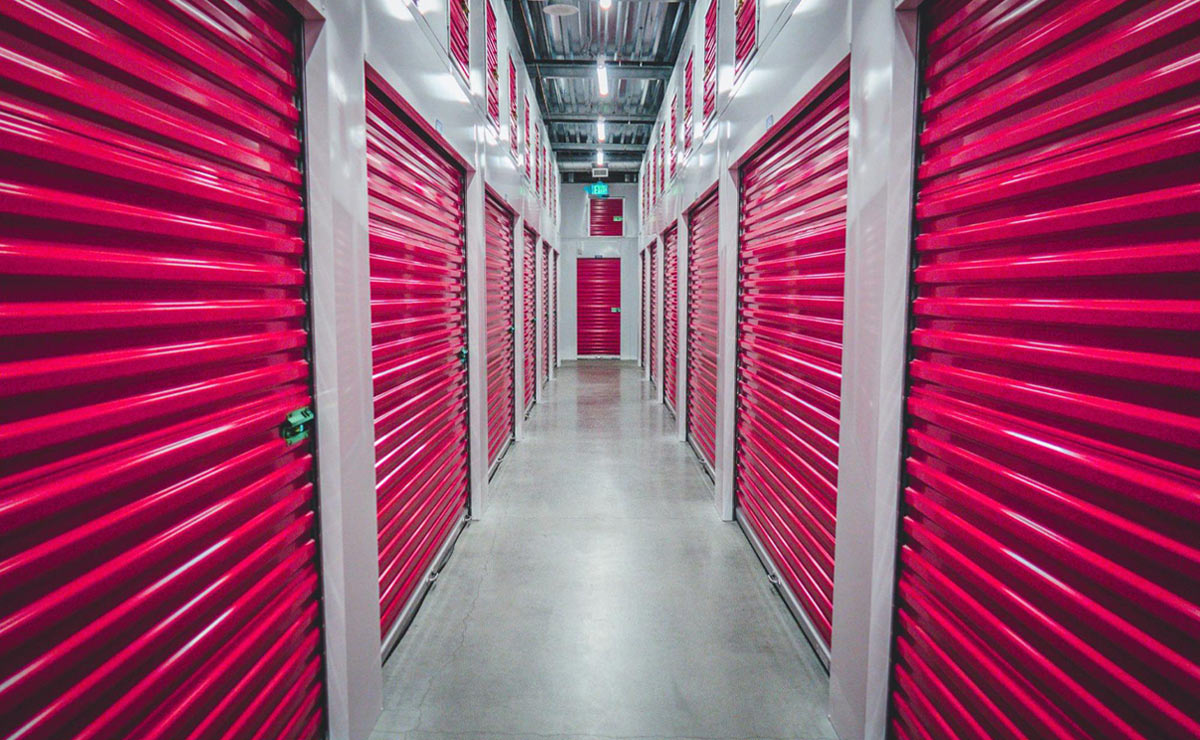

To minimize risks, familiarize yourself with local regulations and partner with certified waste management companies for proper disposal. Tarik Williams of TLW Construction says, “There are specialized consultants and subcontractors that manage and conduct the removal of any hazardous materials.”
While mold, chemical spills, and common building materials pose contamination risks, self-storage facilities can encounter even more unexpected hazardous materials. Here are some lesser-known threats:
Mercury
Improperly disposed of fluorescent bulbs, thermometers, or certain medical equipment can introduce mercury into a storage facility. Mercury is a highly toxic heavy metal that can cause neurological damage, respiratory problems, and developmental issues in children. “It is essential to work with a licensed and insured remediation company” when dealing with any contamination, especially mercury, according to Zucker. Improper handling can exacerbate the problem.
Lithium-Ion Batteries
These batteries, commonly found in laptops, phones, and power tools, can pose a fire hazard if damaged or improperly stored. Dodge emphasizes that following “manufacturer recommendations for storage and disposal” is crucial.
Illegal Materials
Unfortunately, storage units can be misused for storing illegal or hazardous materials. This could include anything from illicit drugs, stolen chemicals, and biomedical or hazardous waste to unregistered firearms or explosives. Facility managers should be vigilant and report any suspicious activity to the authorities. Additionally, know that “an operator has the right to verify what tenants are storing in their units based on the ‘use’ clause of the rental agreement,” explains Zucker.
Firstly, understanding the legalities is crucial. Different regulations govern the disposal of various types of hazardous waste, including mold, chemicals, and asbestos. Zucker says, “Both federal and state law contain ‘strict liability’ provisions against property owners, even if they were not the party that originally brought the hazardous materials onto the site.”
Next, choosing the right disposal method is essential. There’s a lot of misinformation circulating about proper disposal techniques. For instance, simply throwing away moldy items or pouring leftover cleaning products down the drain is not only ineffective but can exacerbate the contamination problem.
Secondly, prioritizing safety is paramount throughout the remediation process. This involves utilizing appropriate personal protective equipment (PPE) for workers involved in the clean-up, depending on the specific type of contamination. Additionally, proper containment measures are necessary to prevent the spread of contaminants during the remediation process. From a construction standpoint, Williams says there are some important key considerations when removing hazardous waste. Construction companies should ensure they are “engaging with properly licensed, insured, and qualified consultants and subcontractors and ensuring that the lawful testing, reporting, and work completion reports are filed with the proper authorities.”
Finally, striking a balance between efficiency and cost-effectiveness is crucial. While thorough remediation is essential, the cost associated with the process can be significant. Exploring various disposal options, comparing quotes from qualified remediation companies, and potentially considering DIY solutions for smaller-scale contamination (with proper safety precautions) can help achieve successful remediation within a reasonable budget.
It’s important to note that, however costly it is, Zucker advises that professional remediation is essential from a legal and health standpoint. “There is direct, specific, and strict liability that can be imposed on a property owner that improperly disposes of hazardous materials, even if they were not the original owners of the hazardous materials. So, if anything is found in a tenant’s unit, using a professional remediation company is key. In fact, depending on the materials at issue, the failure to use a professional and well-trained company could be a life-threatening health decision.”
Additionally, educating renters on best practices for storing their belongings can go a long way in preventing contamination issues. Zucker advises owners always to include rental agreements that “… include provisions where tenants are prohibited from storing anything that could be deemed as hazardous materials and facilities should have the right, upon discovery, to remove and dispose of any items that fall into this category. Additionally, operators always have a right to inspect their tenant’s stored goods, so if you are concerned about what is being stored, you can ask for the tenant to permit inspection of the goods as they are being stored and can demand access if there is later evidence of improper goods being stored.”
Moreover, the importance of regular inspections and maintenance cannot be overstated. Scheduling regular inspections of the facility to identify potential problems early on, combined with routine maintenance tasks like addressing leaky pipes or repairing damaged ventilation systems, can play a crucial role in creating a clean and healthy storage environment for everyone.

Process
The Benefits Of Working
With Subcontractors
By Catherine Gove
uilding a new self-storage facility is a significant investment that has become even more complex in recent years due to supply chain issues and labor shortages. Using subcontractors with specialized knowledge in various areas of the build can make the project go more smoothly, finishing on time and within budget. When building a self-storage facility, these skills can be even more important.
“When you hire a subcontractor, you’re hiring someone who specializes, and in almost every case will know more about it than you do,” says Charles Plunkett, CEO/founder CAPCO Steel, Inc. and CAPCO General Contracting.
Subcontractors can improve the construction process of self-storage facilities. They bring expertise, efficiency, and knowledge to a project. Establishing and maintaining good relationships with subcontractors and communicating throughout the build can lead to faster project completion and cost savings.
“They are efficient. They get out of the truck every morning, and they know what to do. No one has to tell them. Everybody knows what their job is. They do it every day, day in, day out,” says Plunkett.
When building a storage facility, items like doors can be very specific, and hiring subcontractors who know the industry can be especially important. Working with subcontractors who know self-storage facilities ensures they will use industry-specific tested materials and suppliers that lead to safe, secure, well-built buildings. Subcontractors also have relationships with suppliers and manufacturers that can be especially beneficial.
“By hiring a subcontractor that’s familiar and has been in the self-storage industry, just from the relationships alone, that’s a plus, that helps expedite the project completion,” says Eric Henderson, Janus International’s western region construction manager.
This can be critical now when supply shortages can cause construction delays. According to Rachel Parham, president of Noah’s Ark Development, a subcontractor who knows how to pivot when material is not available is also important.
“That’s a big thing right now,” she says, “when they read through these plans, where can they find options to value engineer or to provide you alternatives so that they can get the materials on time.”
“We have a whole generation that decided to go to college and not go to trade schools, which did not benefit us at all because we don’t have the experience we used to have, and they’re not as readily available,” says Parham.
Using subcontractors makes staffing easier by outsourcing it to each trade. Instead of a builder managing a workforce of 40 or 50 people, each subcontractor manages its own employees. That includes everything from paying taxes to allocating sick days.
“I mean, it’s substantial,” says Henderson. “You’re looking at your taxes, your insurance, your workman’s comp; you’re looking at a lot of other overhead expenses, so it definitely reduces the overhead expense.”
“In almost any town, you’re going to have building codes,” says Plunkett, “and once the building codes come into play, then you start having to hire professionals. If something happens because it wasn’t built to code, it’s going to be much worse for you as an owner-operator.”
Since building codes ensure a facility is built safely and meets safety and accessibility requirements, using a subcontractor who knows the codes ensures the work will be in compliance and built soundly.
“Subs know the building codes, which assures that they meet the codes and install products correctly. This knowledge is vital for avoiding fines and ensuring the safety and reliability of the facility,” says Henderson.
Liability, Licensing, And Insurance
Hiring licensed and certified subcontractors also ensures that they are a professional with a certain level of expertise and will be more likely to finish the job efficiently and safely. In some states, construction projects of a certain value will require all workers to be licensed.
Plunkett explains, “For example, in Louisiana, if the total aggregate value of the entire project is more than $40,000, everyone involved in the construction must be licensed by the state.”
General contractors (GCs) discuss the scope of work and expectations of the contract with the subcontractors. The general contractor is also responsible for managing the schedule, sequencing the subcontractors, and communicating with the owner, architects, engineers, and subcontractors.
Today, GCs like CAPCO are using technology like iPads and software that allows subcontractors to view plans and make notations so all parties can see what’s going on as the project progresses. As questions arise from subcontractors, the general contractor ensures that the question is raised and resolved.
If changes are made, they make sure the cost and schedule implications are tracked. With so many different moving parts, having a general contractor who can ensure the subcontractors coordinate with each other is imperative.
“You have to have a GC that understands schedules,” Parham says, “because when you’re in the field, things change constantly, and you’ve got to make decisions, especially when you’ve got sprinklers and HVAC and electrical lines all within less than two feet of space in a building. You’ve got to plan that and schedule them appropriately so that you know who goes in first, and then you’ve got enough room for everything that goes in.”
Plunkett agrees. “We’re essentially the conductor,” he says. “This guy over here might be a great violinist, and this guy might be a great trumpet player, but they need someone leading the band to bring it all together to make it sound beautiful.”
As with subcontractors, it’s important to work with a general contractor who understands self-storage. “It’s really important to have a GC that understands self-storage, because I have worked with GCs as a developer and they know the dirt, they know the materials, they know the subcontractors, but they don’t have the experience building self-storage and they don’t understand the concept,” says Parham.
“We’re not able to do what we do without subcontractors,” says Plunkett. “If you don’t have a good relationship with subcontractors, and you don’t know how to manage subcontractors well, or you don’t know how to go to a different area and find the rights of contractors to work with, you’re going to have a mess on your hands.
When finding new subcontractors, experience matters, but providing solutions to today’s issues is also important to Parham. “Experience—that’s the most important thing,” she says, “and when they provide the bid and they’ve read through the plans, making sure they have an option to give you alternatives.”
Relying on the individual strengths of subcontractors can lead to greater project efficiency. “Subcontractors are only going to expedite the project,” says Henderson. “You’re going to be able to meet your deadlines. If you try to do it all in house, it’s just going to be a nightmare for you.”
By getting a job done more quickly, and by providing quality assurance, subcontractors can also help a job stay within or under budget.
“Anytime you’re saving time, that means you’re also saving money,” says Plunkett. “Because, you know, time is money in our world. There are just so many reasons to hire subcontractors, and very, very precious few not to.”

he self-storage industry has traditionally focused on established, high-density markets. But a shift is underway. Smaller metropolitan areas, often referred to as tertiary markets, are experiencing a surge of interest from storage developers. These regions, once overshadowed by their larger counterparts, present a unique set of opportunities and challenges compared to well-trodden development grounds.
For storage developers accustomed to the familiar landscape of major cities, venturing into tertiary markets necessitates a fresh perspective. While the potential for untapped demand is undeniable, careful consideration is required to ensure a project’s success. Factors like population size, job growth, cap rate, and the presence of traditional economic drivers like strong GDP are important benchmarks. However, in tertiary markets, a nuanced approach is essential. Understanding the influence of non-traditional economic drivers, such as anchor institutions (universities, hospitals) or burgeoning industries, becomes equally important.
We spoke to industry leaders on the pros and cons of tertiary markets, the best way to navigate developing one successfully, and the precautions every developer should take before sinking their teeth into a tertiary market.
Tertiary markets are geographically defined by a lower population density than primary (major cities) and secondary markets (regional hubs). A more nuanced approach considers many factors when determining a tertiary market.
- Population Size: There’s no universally agreed-upon threshold, but tertiary markets typically fall below the 1 million mark. However, population size alone doesn’t tell the whole story. A smaller city with a vibrant university or a booming manufacturing sector might hold more potential than a larger one with a stagnant economy.
- Economic Base: Look beyond the traditional GDP metric. Consider the presence of anchor institutions like universities and hospitals or emerging industries that fuel growth. A thriving university town, for example, may see a surge in student storage needs, while a region with a burgeoning renewable energy sector might require specialized storage solutions. As Ted Culbreth from SBS Construction points out, “Generally, in a tertiary or a market that is newer, the rates are less, but the ease of development is less, the cost of development is less, the competition is less.” This balance between potentially lower rates and a more favorable development landscape is a key consideration for developers.
- Infrastructure: Tertiary markets may have less developed public transportation networks or limited access to amenities compared to larger cities. This doesn’t necessarily negate their potential; however, it’s crucial to factor in these limitations during the planning stages.
While the potential for lower storage rates in tertiary markets is a concern for some developers, it’s just one piece of the puzzle. Eric Blum of BMSGRP emphasizes a calculated approach when considering economic drivers. “First and foremost, you want to look at what the income in the market is. You want to make sure you have a good number there. You want to see what the home prices are. Again, it all comes back to the income in the area. Other economic drivers would be what businesses are there in terms of warehouses, retail, is it a university area, that type of thing.” Income and home prices are crucial factors in determining competitive storage rates that ultimately contribute to a healthy return on investment (ROI).
The first step is conducting thorough market research to identify unmet needs within the community. This could range from a lack of storage options for a burgeoning e-commerce sector overflowing with inventory to a dearth of specialized cold storage solutions for local agriculture facing limited on-farm storage capacity. Understanding these gaps allows developers to tailor their projects to address specific demands, fostering a symbiotic relationship with the local economy.
Choosing the best site for your company is not easy, but it’s important to do your research and find which economic drivers matter most for your company. Culbreth emphasizes the importance of a continually growing population when choosing a site in a tertiary market. “So, if you were to ask all of our developers the top 10 reasons they like a site, those 10 reasons will probably all be the same, but they will all be in different orders. Living in Texas, we have an advantage that a lot of areas don’t; we have a continually growing population, which reflects a continually expanding self-storage market. So, the population grows, and once you get past that the amount of competition that is in the area, the population that’s in the area, the income that’s in the area, the scenario is no different than building in any market,” Culbreth explains.
Next, align your development project with those needs. Will it provide much-needed storage space for a specific industry or revitalize a vacant lot with a modern facility? Blum believes developers should pay close attention to the landscape, as well as production costs and potential earnings. “Is growth headed there? Are people moving to that area? Are high-income jobs coming there? Is there a retail market to go there, or some type of a chip factory being built that will bring higher-end businesses as well as people? And of course, what rate per square foot could be obtained—realistically,” Blum asks. Remember, the project should complement, not disrupt, the existing economic landscape.
Finally, don’t forget the financial side of things. While tertiary markets often boast lower land costs, they may also have a smaller pool of potential tenants. To mitigate risk, conduct a comprehensive financial analysis that factors in the cap rate (potential return on investment) and projected vacancy rates.
Overall, deciding whether tertiary markets are viable depends entirely on your individual needs, preferences, and goals.
Moreover, when navigating a tertiary market, success hinges on a long-term vision and building trust with the community. Engaging with local stakeholders allows you to understand their needs and tailor your project accordingly.
This might involve developing smaller, more targeted projects that address specific gaps rather than large-scale ventures. For example, tertiary markets may not necessitate large-scale storage facilities. Remember, tertiary markets often experience slower development and return on investment. Patience and a commitment to the community are key for a thriving project.

Pros
- Reduced Competition and Growth Potential: A key advantage of tertiary markets lies in the potential for a “first-mover advantage.” As Blum highlights, “Pros would be low competition if the growth rate is high …” In markets with limited existing storage options and a healthy growth trajectory, developers can establish themselves as the go-to solution for a burgeoning demand. This can translate to higher occupancy rates and potentially strong returns on investment.
- Faster and Less Costly Development: Culbreth emphasizes the streamlined development process in tertiary markets. “The pros are usually less stringent development requirements, which oftentimes equate to less cost to develop …” Navigating fewer regulatory hurdles and lower land acquisition costs can significantly reduce development timelines and upfront expenditures.
Cons
- Market Size and Income Levels: The smaller population base in tertiary markets presents a double-edged sword. While it translates to less competition, it also means a smaller pool of potential tenants. Furthermore, as Blum points out, “the downside … might be a major one: lower rates. If the market is a lower income area, it might not afford the same opportunity than a higher income area being that it’s a rural market.” Developers need to carefully assess the income levels within the target market to ensure they can establish sustainable rental rates.
- Potential for Oversupply: Culbreth warns of a potential downside to the ease of development. “The cons you can align directly with that as well; if it’s easier to develop, there’s more likely to be competition …” With fewer barriers to entry, tertiary markets can attract multiple developers, leading to oversupply and potentially lower occupancy rates. Thorough market research and a well-defined niche become even more crucial in these scenarios.
If you’re considering developing in a tertiary market, expect to see an ROI in a couple of years, says Blum. “You can look anywhere on a return in a 4- to 6-year window if there’s minimal growth, and a traditional 2- to 4-year return if that growth is coming. And make sure you get a feasibility study.”

We would love it if you would celebrate with us and be featured in MSM Magazine!


essenger’s 2021 Facility of the Year overall winner, Compass Self Storage in Jupiter, Fla., has raised its own bar of excellence with the addition of 129 high-end wine storage vaults. Ranging in size from 2-by-2.5-by-2s for small collections up to 10-by-10-by-8 walk-in units capable of holding 761 standard wine cases, the mahogany cabinets (custom-built by Janus International) encompass 1,807 net rentable square feet (NRSF) atop a ceramic tile floor. The wine vaults were available for rent by private collectors and commercial tenants in October 2023.
Along with its 982 original units (drive-up and climate-controlled), Amsdell Companies’ champion location now offers a total of 121,577 NRSF. Keyless entry smart locks, individual unit alarms, a perimeter fence, and a covered loading bay and elevators within the three-story building provide customers with both convenience and peace of mind while accessing the fortress-style facility’s various cabana-esque storage buildings. Moreover, Compass Self Storage in Jupiter was constructed with hurricane-proof doors and shatter-resistant windows to withstand up to Category 5 hurricanes and it boasts a full-power generator that could run the entire property for several days. It’s approximately 85 percent occupied.

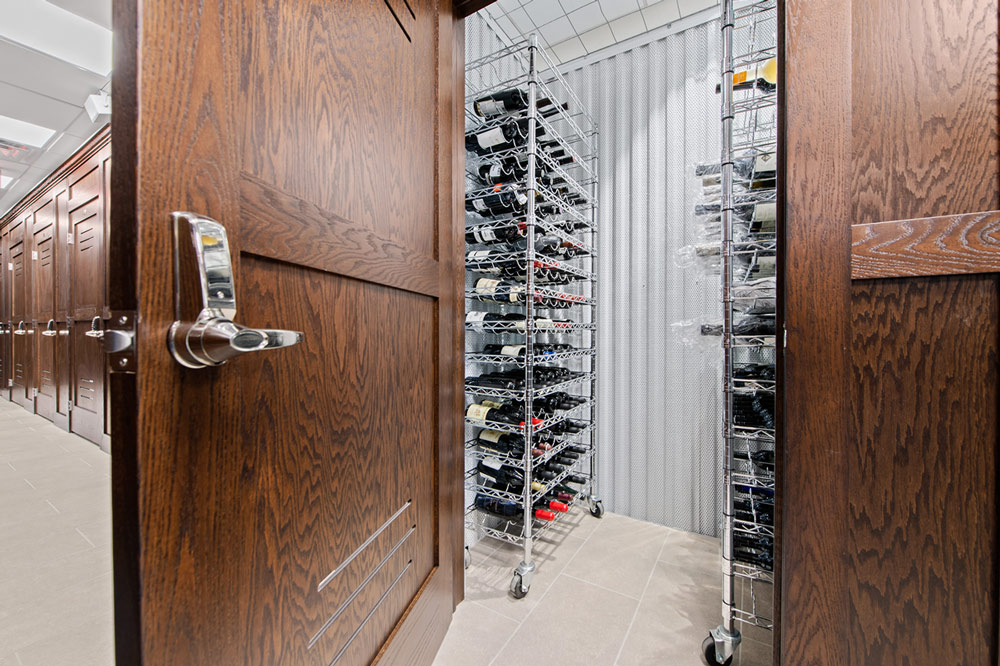
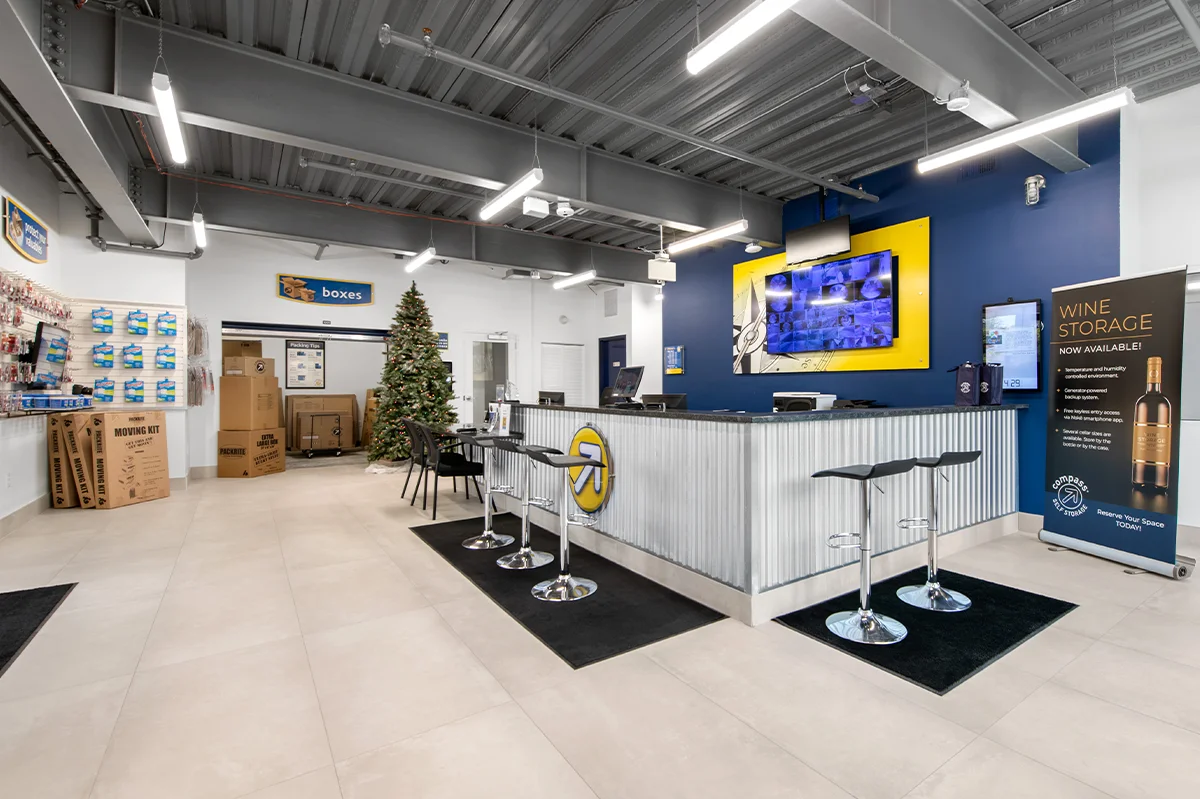
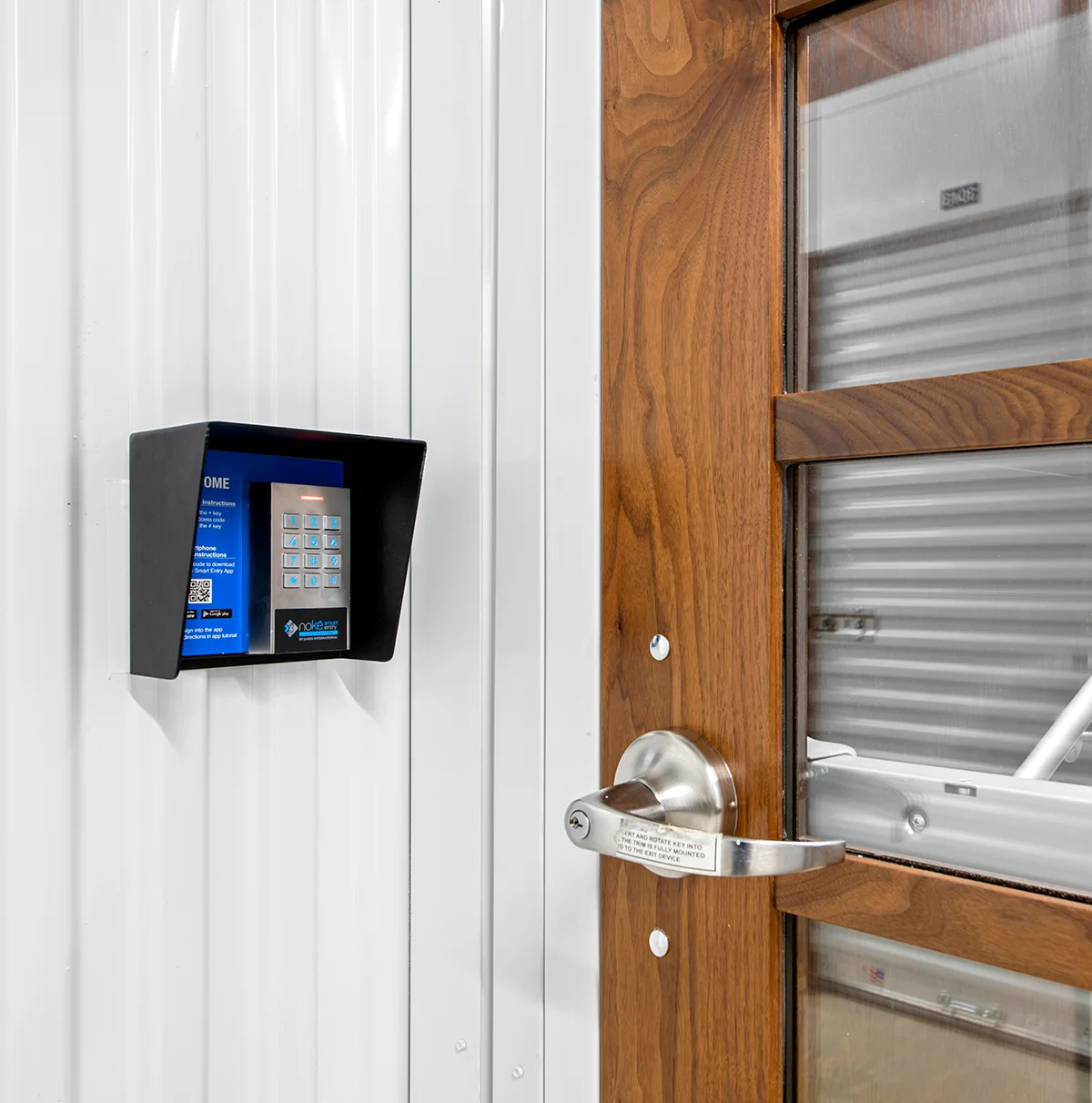
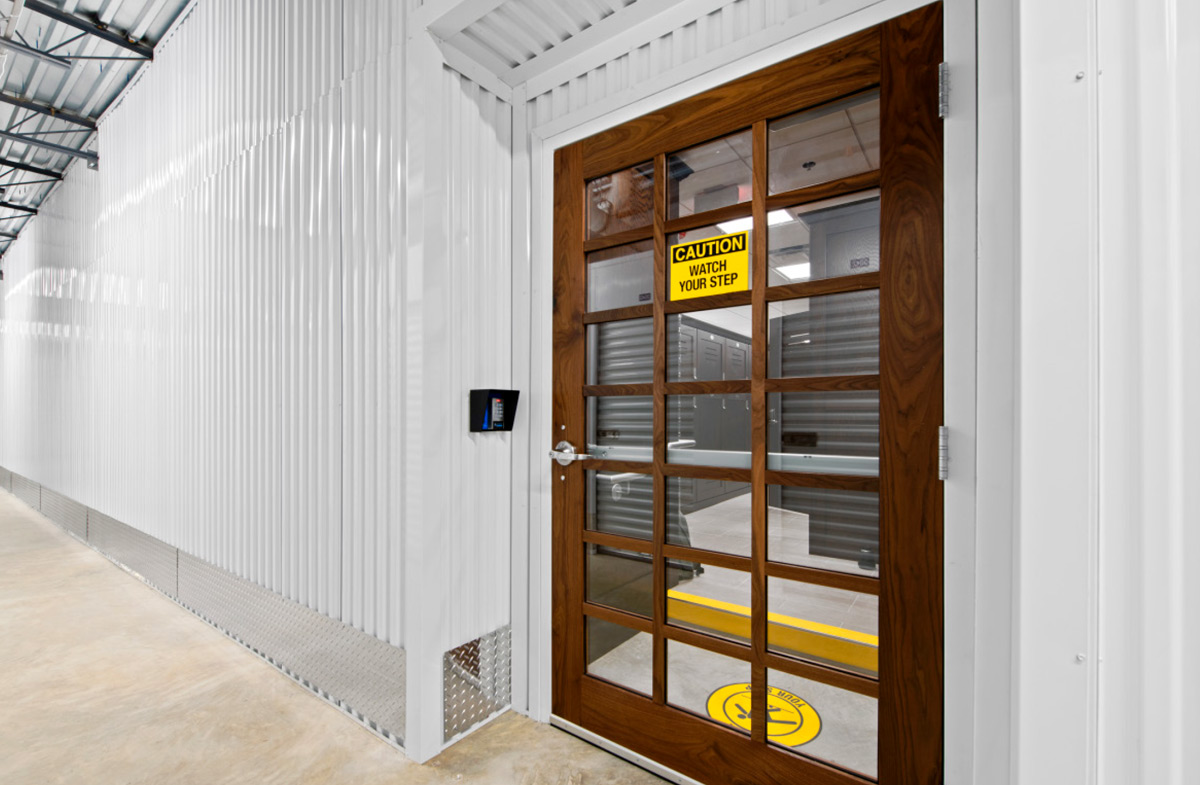


etermining optimal timing and financial circumstances for expanding a self-storage operation can easily become overwhelming.
Completing a transaction with the wrong terms or at the wrong point in the life cycle of a business can result in an unwanted setback. Add in economic uncertainty and steady but higher-than-desirable interest rates, and hesitancy or complacency could lead to missed growth opportunities, including mergers or acquisitions of struggling self-storage competitors.
Assembling a trusted team of financial advisors who truly understand the nuances of the industry can result in creative lending options combining both commercial real estate and operating capital needs. Fears over logistics should not stop the pursuit of growth, and the right team members can help identify options not even being considered.
If expansion of a self-storage business is a priority, a regional or community bank attuned to the traits and trends of the local market can support strategies tailored to the target demographic, which is often contained in a very tight geographic area around the business.
The ups and downs of a closely held, owner-operated business create variables that must be addressed in pursuing growth. Timing matters when exploring expansion capital, a new capital structure, or a more efficient solution to even out cash flow cycles.
Conversations related to these logistical considerations need to happen before growth becomes a priority or opportunities arise. Proactive planning with financial stakeholders can set your business up for efficient execution of a deal when presented with desirable opportunities that might otherwise be missed.
Unlike a competitively priced home, which may sell within a matter of days before buyers can fully assess their options, studies show that it takes an average of eight to 10 months to sell a business. In recent years, this time frame has been increasing annually, according to the California Association of Business Brokers. This is even the case for successful, cash-flowing businesses, thus posing an opportunity for those looking to seize opportunities to grow while balancing careful decision-making.
According to U.S. Census Bureau data, the self-storage industry continues to demonstrate unique resilience to negative economic circumstances, including the financial impact of the COVID-19 pandemic. As with any category, however, there are operations that have not been properly managed but still have potential under the right ownership, even in an increasingly saturated market.
While inflation rates are dropping slightly, higher prices are expected to last for the foreseeable future. Conversely, higher interest rates set to slow the effects are expected to come down, but no one can say exactly when.
Keeping this outlook in mind, there are many ways self-storage businesses can navigate inflation and even take advantage of growth opportunities. Strategic responses to inflation can potentially drive higher revenues, even with higher interest rates on loans, which are only one piece of the lending puzzle.
Evaluating “loan readiness” may even shed light on gaps that need to be addressed in currently successful business strategies. Identifying and addressing red flags or shortcomings has benefits beyond increasing chances of a positive outcome in a lending application, particularly when they involve commercial real estate and operational lines of credit. Examining readiness can shed light on a variety of ways to strengthen an operation, such as improving processes and efficiencies and developing a trusted relationship with a communicative, collaborative bank.
The most important takeaway in determining loan readiness: Business loan decisions are both objective and subjective.
Basic financial criteria must be met, but overall impressions, work style, and the ability for the bank and business owner to develop a deeper, trust-based relationship matter. With a better understanding and preparation, self-storage businesses can address the full range of qualifications to maximize chances of getting that coveted “yes” on a loan application needed to take advantage of immediate opportunities.
NO BUDGET
A surprising number of businesses do not have a set budget, meaning the bank can’t forecast growth. It’s also a sign that it may be too early in the life cycle for a bank to take the risk.
MINIMAL UNDERSTANDING OF YOUR NUMBERS
If there is difficulty explaining critical details of finances, or relatively simple questions are hard to answer, it leaves the business owner and the bank vulnerable should financial challenges arise.
INTEREST RATE IS A PRIMARY CONCERN
Everyone wants the lowest possible interest rate, but if businesses are talking to multiple banks and pitting them against each other, a lender may see this as “rate shopping” rather than seeking a business partnership. Switching banks frequently also leads to questions about commitment.
INSTABILITY, VARIABILITY
If balance sheets show frequent highs and lows, especially on occupancy rates, providing background on these issues with the prospective banker can help mitigate concerns.
TURNOVER RATIOS LENGTHENING
Delays in paying vendors or collecting payments can worry a banker. There are many good explanations that will help overcome this hurdle and ensure the lender understands the nuances.
NO SKIN IN THE GAME
If an entrepreneur or business owner hasn’t put their money where their mouth is, why should the bank? History of investment or plans to invest can play a role in an evaluation.
GROWTH AND EXPANSION THAT IS TOO FAST
This may seem counterintuitive, but rapid expansion can mean management may not be able to sustain the growth or may not have grown infrastructure and/or capital base to keep up.
OVERALL CASH FLOW
Providing a banker with global cash flow information, including relevant personal and affiliate financial and debt records, can help banks calculate total cash available to pay for potential loans. While focused on capital for financing, overall marginal or negative cash flow must be addressed. Alternatively, many businesses have felt a need to carry excessive amounts of cash without realizing that reducing that number and increasing debt can be a positive situation.
GROWTH THROUGH OTHER MEANS
The needs of storage customers continue to evolve, and mergers and acquisitions are only one way to grow an operation.
When assessing relevant opportunities, financial advisors and the business owner should consider rising costs, including rent, utilities, insurance, and repairs. Other associated concerns related to increased spending include technological advancements and even customer service needs in an increasingly digital environment with unique expectations.
Keeping pace with industry standards like electronic gate systems and online rental options continue to become increasingly relevant for staying competitive in the self-storage market, especially to provide adequate security that protects customers’ possessions. This also includes increasing needs to attract and retain quality employees to ensure prompt responses that have a direct impact on customer satisfaction and retention.
Maintaining competitiveness can occasionally mean pursuing an opportunity to acquire property and build modern, innovative facilities at the cutting edge of the self-storage industry.
While these typically multimillion-dollar projects can take time, the advantages can include multistory facilities with climate-controlled units and niche spaces for car/recreational vehicle storage to attract increasingly affluent customers. Additionally, a lack of self-storage facilities or an abundance in a specific geographical area can make these amenities a differentiator that captures market share and enables additional merger and acquisition (M&A) activity down the line.
Analyzing risk-reward scenarios with trusted financial advisors who both understand the goals of your business and the target market and demographic allows for informed decision-making based on viable lending models that result in desired outcomes.
Financing terms for self-storage businesses have become increasingly challenging due to circumstances not unique to the industry. However, successfully navigating the interplay of the general economic environment and needs specific to self-storage businesses often hinges on the partnership between a capable business owner, the appropriate contractor partners, and an experienced lending partner who possesses comprehensive market knowledge and understanding.

he self-storage industry is a strong option for passive investments, but how should an investor perform due diligence in this space?
Experts suggest that investors should spend at least 20 hours reviewing an opportunity before investing. There is a strong correlation between the amount of time spent in due diligence and the overall performance of the investment portfolio.
Whether you make passive investments through a REIT, an investment group, or an online marketplace, you still need to perform some due diligence before placing the investment.
The following paragraphs offer some recommendations for your research. Specific recommendations fall into three categories:
- Analysis of the asset itself,
- Analysis of the documents that define investment terms, and
- Analysis of the individuals or company managing the asset and your investment.
Financial Health
One of the primary aspects to consider is the financial health of the REIT. Regularly review the REIT’s dividend history for consistency and growth. Consistent and growing dividends are often indicative of a well-managed REIT. Analyze quarterly and annual earnings reports, focusing on profitability, revenue growth, and operational costs. A thorough understanding of the REIT’s debt management strategies is also crucial. Examine the debt-to-equity ratio to ensure the REIT is not overly leveraged, as excessive debt can pose significant risks.
Portfolio Quality
The quality of the REIT’s portfolio is another critical factor. Evaluate the geographic distribution and types of storage facilities within the REIT’s portfolio. High occupancy rates are indicative of strong demand and effective management. Additionally, consider the condition of the properties. Older facilities may require significant maintenance, which can impact profitability.
Management Team
The experience and track record of the management team plays a significant role in the success of a REIT. Research the management team’s history and effectiveness in property management. A significant management stake in the REIT can align their interests with those of the shareholders, fostering trust and stability.
Market Conditions
Understanding regional self-storage market trends is essential. This research includes analyzing supply, demand, and demographic influences. Comparing the REIT’s performance against competitors, considering pricing, property locations, and services offered, provides insight into its competitive standing.
Growth Opportunities
Look for indications of growth strategies, such as acquisitions or the development of new facilities. Assess how the REIT responds to evolving market demands and technological advancements. Adaptability and innovation are crucial for long-term success.
Legal And Regulatory Compliance
Ensure all properties comply with local zoning laws and other regulatory requirements. Be aware of any ongoing or past legal issues affecting the REIT. Compliance with legal and regulatory standards is vital for sustainable operations.
Risk Factors
Understanding the potential impact of interest rate fluctuations is essential, as REITs often operate with considerable leverage. Consider the implications of economic cycles on the real estate market, as downturns can significantly affect performance.
Tax Considerations
Be aware of the tax implications of REIT dividends, which are mandated to distribute at least 90 percent of taxable income to investors. Understanding tax obligations can help in financial planning and maximizing returns.
Business Model
Identify the organizational structure, whether a partnership, corporation, or another form. Review the strategic plans for market targeting, property types, and growth projections. Understanding the business model provides insight into the group’s operational approach and potential for success.
Financial Analysis
Conduct a thorough review of financial statements, focusing on revenue, profitability, and cash flow. Analyzing the capital structure is also important. Understand the financing structure and the terms of any incorporated debt or equity.
Market And Competition
Research demand in target areas, considering local economic conditions. Evaluate market competition by analyzing market share, pricing strategies, and service offerings. A comprehensive market analysis helps with understanding the competitive landscape and identifying potential opportunities and threats.
Operational Efficiency
Investigate plans for integrating technology and management practices to achieve economies of scale. Assess the condition of facilities and anticipated capital expenditures. Efficient operations can provide cost savings and improved profitability.
Management And Experience
Evaluate the management team’s experience and past success in managing similar growth strategies. Understand how management’s incentives align with investor interests. A capable management team is crucial for successful execution of the business strategy.
Risk Assessment
Identify specific risks associated with the investment strategy, including market and operational risks. Review planned exit strategies considering market conditions and potential buyers. A thorough risk assessment helps identify and mitigate potential issues.
Tax Implications
Analyze potential tax impacts on profits, dividends, and capital gains. Understanding tax implications is essential for financial planning and optimizing returns.
Investor Communications
Find out if the investment group maintains open and regular communication with investors. Transparency in communication builds trust and helps in maintaining investor confidence.
Review Of Documentation
Examine financial statements and cash flow projections, focusing on profit and loss statements, balance sheets, and historical occupancy rates. Reviewing the rent roll provides insight into tenant quality and lease terms, which is critical for assessing the property’s stability and potential future performance.
Legal And Compliance Review
Confirm clear title and ownership. If possible, check for encumbrances or liens and review documents confirming compliance with local zoning laws. Legal and regulatory compliance is essential for ensuring the legitimacy and sustainability of the investment.
Operational Review
Focus on properties managed by experienced professionals. Review their qualifications and track record in property management. Examine operational plans detailing strategies for maintaining and enhancing the property’s value and occupancy. Effective management is crucial for maximizing returns and ensuring the property’s success.
Market Assessment
Analyze market analysis reports provided by the platform to understand the property’s position in the local market, competition, and economic factors affecting supply and demand. A comprehensive market assessment or appraisal provides valuable insights into the property’s potential and competitive standing.
Deal Structure And Terms
Carefully read the investment terms to understand your rights, expected returns, fee structure, and any penalties for early withdrawal. Review the exit strategy documents, including expected timelines and conditions for sale. Understanding the deal structure is essential for making informed investment decisions.
Third-Party Reports
If available, review third-party opinions or analysis reports on the property for additional validation of its potential. Independent reviews provide an unbiased perspective. They help make a well-informed decision.

n recent years, the integration of renewable energy solutions into various types of infrastructure has become increasingly popular, driven by both environmental concerns and economic incentives. One significant incentive is the federal solar tax credit, officially known as the Investment Tax Credit (ITC), which can be a powerful financial tool. This article explores how solar tax credits can be effectively monetized to build RV, boat, and self-storage facilities, providing very cheap capital as part of the capital stack and ensuring a sustainable investment strategy.
Equity Financing
Equity investors can be more attracted to projects with integrated solar energy due to the reduced operational costs and the ITC. The tax credits effectively increase the return on investment (ROI) for equity investors by lowering the upfront costs.
Debt Financing
Lenders may offer better terms for projects that are partially financed by solar tax credits. The reduced risk associated with lower operational costs and the potential for higher occupancy rates can make lenders more willing to provide favorable loan terms.
Tax Equity Financing
This involves bringing in an investor specifically to take advantage of the tax credits. These investors provide capital in exchange for the rights to the tax credits and other tax benefits associated with the project. This can be a critical component in reducing the upfront equity required from the developers.
- Project Planning – Integrate solar energy systems into the design of the RV, boat, or self-storage facility from the outset. This involves working with architects and engineers to ensure the facility can support solar panels effectively.
- Financial Modeling – Create detailed financial models that incorporate the cost savings from the ITC, reduced energy bills, and potential revenue increases. This helps in presenting a strong case to investors and lenders.
- Securing Financing – Approach potential equity investors and lenders with the financial models. Highlight the benefits of the ITC and the long-term cost savings to secure favorable financing terms.
- Installation And Certification – Ensure that the solar energy systems are installed correctly and meet all necessary standards to qualify for the ITC. Certification and proper documentation are crucial to claiming the tax credits.
- Claiming The ITC – Work with tax professionals to file for the ITC. Ensure all documentation is accurate and complete to avoid any issues with the IRS.
Regulatory Compliance
Ensuring compliance with all federal and state regulations is critical. This includes proper installation and maintenance of the solar systems and accurate documentation for tax purposes.
Market Volatility
The value of tax credits can be influenced by changes in federal policy. Developers must stay informed about potential changes in legislation that could impact the ITC.
Technical Expertise
Successful integration of solar systems requires technical expertise. Working with experienced solar installers and financial advisors is essential to maximize the benefits of the ITC.
Upfront Costs
Despite the savings, the initial investment in solar systems can still be high. Developers need to carefully manage their capital stack to ensure they have sufficient liquidity to cover upfront costs.
ccording to Trepp, a leading provider of data and insights to the commercial real estate market, around $2.81 trillion of commercial real estate debt is coming due by 2028. This debt is scheduled to be repaid or refinanced in four years, meaning that companies in the real estate market will need to make payments or find alternative financing arrangements within this time frame.
The upcoming $2.81 trillion in commercial debt will impact the self-storage sector’s financial landscape, too. To understand the best practices for self-storage companies, Modern Storage Media spoke with industry professionals to gather their insights.
According to Gussis, most commercial loans have maturities that are from five to 10 years from the time of origination, so the debt coming due by 2028 is expected. “Waves of maturities are somewhat predicated on the ups and downs of past origination volume based on interest rates and availability of capital,” he adds.
The principal and founding member of The BSC Group, LLC, Shawn R. Hill, also shared his opinion on the self-storage industry’s financial landscape with the upcoming debt and said that there’s no reason to panic. “Despite current headwinds that are affecting rates and occupancy, self-storage remains a favored property type amongst the lending community due to its strong historical performance and recession–resistant characteristics,” he says. “As a result, I think there will continue to be ample liquidity for the asset class in both the debt and equity markets.”
Gussis agrees. “Self-storage, like all commercial real estate sectors, is exposed to adverse market conditions, however, historically, self-storage has proven to be more resilient than almost all other commercial real estate,” he says.
However, there are some challenges in the financial sector of the self-storage industry, according to Gussis. “As we all know, the self-storage sector had a phenomenal performance during the pandemic years. Now, post-pandemic, owners are competitively battling over new customers by discounting new customer rates.” In his opinion, self-storage owners need to compete for available capital from capital sources.
“The self-storage sector is still appealing to capital sources due to the many unique positive attributes of self-storage, however, the current industry trends are leading to underwriting challenges and relative appeal,” says Gussis. “Banks and other capital sources may choose to be much more selective about which property and which sponsors they want to pursue.”
In Hill’s opinion, there are many opportunities in the market, as well as plenty of liquidity, to refinance maturing loans or permanent debt products.
R. Christian Sonne, the executive vice president of Newmark Valuation & Advisory, and national practice co-leader for the Valuation & Advisory’s self-storage specialty practice, also believes that there are opportunities to refinance loans. “Pretend and extend is the strategy now. Banks are having higher regulatory scrutiny now and terms and rates are challenging, so many are extending existing loans expecting lower rates in the fourth quarter of 2024,” Sonne says.
Gussis believes that there are many factors to consider on whether an owner of a self-storage company should refinance their loans. “In terms of the factors that are most relevant to refinance current debt, owners must consider the current interest rate environment, availability of capital, the prepayment provisions of the current loan, and the operating performance of the property,” he says, adding that “extending a loan needs to be negotiated and is usually done when circumstances are that the current loan can’t be paid in full at maturity.”
The negotiations can be based on several factors, including the owner being able to reduce the credit risk of the lender. “The significant rise in interest rates has caused debt payments to rise. Loans are based on a debt service coverage of having operating income be at some level higher than the debt payments,” Gussis adds.
According to Gussis, lenders would like to see a debt-service coverage ratio (DSCR) of 1.20 or higher. “If an owner has not experienced enough operating income growth since the last loan was originated, a new loan may not be enough to pay off the existing debt,” he explains.
Keeping that in mind, sometimes extending a loan might not be the best idea. “Owners must consider their tolerance to maintain ownership and management versus asking whether it’s the right time for them to sell,” Gussis says.
Hill states that it’s also important to consider interest rates because some loans may need additional capital to be contributed to meet the underwriting criteria of the lenders. “In some situations, the ownership may elect to sell the asset rather than contribute additional equity capital to rebalance the capital stack.”
Lenders usually rely on historical performance to project the cash flow going forward, as well as the size of the loan. Because of that, “Borrowers should be aware and be prepared to optimize the cash flow performance of their assets by maximizing revenue and minimizing unnecessary expenses before a maturing debt event,” Hill advises.
In his opinion, the challenges an owner may face also depend on how long they have owned the property and when the property was built. Properties purchased since 2020, for example, “may have been purchased with assuming projected operating income to aggressively which were online with the non-sustainable operating increases being achieved when the property was purchased.”
“Developers with projects opening in the past couple of years could have never projected the current interest rates or increased cost of material and labor, or the current street rents. Thus, there must be owners who will face challenges when they need to refinance their current debt,” Gussis explains.
In difficult situations, he believes that it’s important that self-storage company owners and leaders maintain great banking relationships, which can be a lot of help, especially when the company is going through financial challenges. “If you know that your loan is going to face loan covenant issues or challenges at payoff, be ready to start a dialogue with your lender and start discussing potential mitigants and solutions,” says Gussis.
Hill advises to be mindful of the fact that the market is dynamic and constantly evolving. “There are many different types of loans and lenders out there, so it pays to work with a professional that can help optimize the debt package for the deal depending on the unique circumstances of the transaction as it pertains to the property and ownership dynamics.”
When banks aren’t able to support loaners with refinancing, lending, or extending loans, Hill reminds borrowers that there are other options. “Banks are constantly under pressure from federal regulatory changes, which can definitely impact their willingness to lend. Banks are a major source of liquidity to the market, but thankfully there are many other types of capital providers and loan programs that also provide significant liquidity to the market without the same regulatory scrutiny.”
In summary, it’s important to analyze each case to decide, however, there are many possibilities for self-storage companies to refinance or extend their existing loans expected to mature by 2028.

hen people think about self-storage facilities, a manager cruising around in a golf cart checking locks, showing units, and keeping things secure may spring to mind. The downside of that is what many prospective renters also know of self-storage communications—a busy tone or a voicemail apologizing for the inability to get to the phone, often within already limited business hours that coincide with most prospective renters’ own busiest periods.
“The ability to rent a unit online was few and far between before COVID,” says Jennifer Downer, COO at XPS Solutions, with 24 years of experience in remote management for self-storage property owners. “Many operators were forced into action to accommodate prospective tenants.”
Out of necessity arose a boon of options to switch to online reservations and automation.
“Self-storage in general is a little old school,” says Sneha Elizabath Jose, product manager of Mariposa and Synergy at Tenant, Inc. “A lot of people are used to doing it the traditional way. There was a bit of change management for them to move to an online platform. They might even feel like, ‘Oh, my job is gone.’ We set the expectation. Your job is not over; it’s just done in a better way so you can concentrate on more important things within your business.”
This change in attitude has improved efficiency for owners and service through convenience for customers.
“After launching self-service kiosks in the early 2000s, OpenTech recognized its future in modern self-storage and went all in to help companies connect with tenants, simplify their operation, and grow their business,” says Kristi Adams, vice president of marketing for OpenTech Alliance. “With innovations that reset industry standards, we’ve built a robust property technology company with a portfolio of 10-plus products to provide practical solutions to tenant and operator challenges.”
“One financial pro is that it frees up your management to focus on other revenue-generating endeavors like marketing and collections,” says Downer. “It may also allow you to reduce overhead by adjusting office hours and payroll. A financial con would be the cost of ‘paying to play’ online. Just as you would want to be the first person to answer the call of a prospect, you also want to be the first facility online that can answer the need of the prospect, or they will move on to the next location.”
Greater access to customers leads to higher levels of business being accomplished.
“Pros consist of 24/7 availability of potential customers to make reservations at any time leading to increased occupancy,” says Adams. “You also now have a paperless process you have automated, saving on time and labor.”
“From my standpoint, the benefits far outweigh the challenges,” says Jose. “Our websites show inventory to a much larger audience, and they can tailor campaigns or ads and then put them on Google, put them on YouTube. If customers are searching for self-storage, those ads pop up and then they can click and get a promotional rate versus walking into the store. The tabs on the top of listings are created to showcase whatever feature or amenity you offer, such as climate-control units, and clicking creates a unique URL to use in blog posts. Anyone coming through that blog post sees a filtered view of climate-control units. We can see where customers are coming from on the backend, giving us a powerful marketing tool that shows companies exactly where they should spend their money. The only con I see is that we are capturing customer data, so it’s very important to ensure the data is secure and it’s not exposed to any breaches or cyberattacks.”
“Technology is great until it isn’t,” says Downer. “If your property management software is integrated with your website, it is critically important that the data within it is accurate. For example, if a tenant reports they have moved out, and that unit is put back into service without checking it, it is possible that it could be rented online but still full of items. On the contrary, allowing rentals online in essence extends your office hours by allowing prospects to rent and even move in outside of normal office hours.”
There always needs to be balance of convenience versus personal service in adding automation to a business.
“Cons are very few, but some that come to mind are removing the personal touch that many operators pride their business on,” says Adams. “You can only communicate so much about how you differentiate on a website rental flow. However, customers often prefer to do things at home over the phone or online versus having to come into the office during a busy moving season in their life. In that aspect, you are enhancing the overall experience they have with self-storage.”
“Fully automated facilities are no longer the future; they are the now for many operators, as the model offers significant benefits in terms of operational efficiency, scalability, and customer convenience,” says Adams. “Online reservations with a rental completion at the facility via a kiosk where you can capture a picture of the tenant, get a driver’s license scan, and sign the lease completes that entire fully automated model.”
“There are already many operators who have fully automated facilities,” says Downer. “Partnering with a vendor that offers remote management solutions is the ideal way to do so.”
A major benefit to bringing automation to facilities is lowering the break-even point, allowing for smaller properties to exist that could not have supported the cost of a manager’s salary. This enables owners and investors the opportunity to move into key locations ideal for the storage market that might have otherwise been too small in square footage to work out financially.
“One fully remote group Mariposa serves comes to mind,” says Jose. “They have one manager for five or six properties. They do not have managers in the individual properties. Customers can go onto the website or app, make a reservation for their rental, get a code for the electronic gates on the property, walk in and show their pin on the mobile app to enter the building, go to their unit again opening it with their app, stow their belongings, and come out leaving their goods secure, without having to talk to anyone. This business started with a small, single property. They then were able to open two or three more locations, and now they are constantly expanding—all because they can do this using online reservations and the storage software. They couldn’t afford to have managers in each location, but using tech they can easily manage a big portfolio remotely.”
While some large corporations are going all in on bringing high-end online reservations to the storage space, many software companies offer a variety of plans at different price points, giving smaller operations a path to join the game. Tech can also help prioritize mom-and-pop operators’ time for the more personal touch of handling face- to-face customers.
“AI Chatbots can handle customer inquiries,” says Adams. “It can guide them through the reservation process and provide instant responses, reducing the need for human intervention.”
“Look for a product which can showcase amenities specific to the available units, something intuitive that customers are used to seeing from online shopping (pick a size or amenity rather than a color of shirt). Offering waitlist capability from the site helps manage occupancy flow. Use the metrics learned from a top-quality product to save money on marketing and to ensure you are spending wisely and are reaching your customers where they are looking.” –Sneha Elizabeth Jose
“Consider your market and your facilities KPIs. If your facility has low occupancy and high ARs, it may be best to clean that up a bit before going fully remote, or partner with a vendor that has experience with those factors.” –Jennifer Downer
“Utilize every possible avenue to secure customers this rental season. This includes having a call center to ensure no calls are missed, a website and mobile app that are intuitive and easy to navigate with online reservation functionality, and a kiosk to complete the full-service rental experience.” –Kristi Adams

ach of our businesses tells a story. You may think your story is simply, “I have 10-by-10 climate-controlled units now available,” but there’s actually a lot more to it. Your story could be about cleanliness and convenience through well-placed technology and a well-kept property. Perhaps it’s a story of hospitality through homemade cookies in an office and a friendly property manager. Or maybe your story goes further, showing community involvement through sports sponsorships, toy drives, or charitable donations. Stories connect us with the people with whom we interact, and shaping that story can go a long way toward building goodwill with current and potential customers.
As you think about your business, what story are you telling? Is it all about self-storage, or does it go deeper? As many owners are finding out these days, customers want to know more about the heart behind a business. They are curious about where you might stand on cultural and social issues. Eighty-three percent of consumers wish more of their retailers would support the causes they care about, and many retailers are taking advantage of this trend by being more vocal about the causes that mean a lot to them. This focus on cause marketing is growing in virtually every industry, including self-storage.


StorageGives is a charitable organization within the self-storage industry. It was founded by Lonnie Bickford, the founder of StorageAuctions.com, the owner of several facilities in Louisiana and Alaska, and a man passionate about his causes. From the beginning of his self-storage journey, he wanted to create an organization that would enable self-storage owners to get involved with important causes that were making an impact around the world. He looked for organizations that would have low overhead costs, ensuring most of the donated funds went to those in need. These organizations must also benefit causes that were accepted by everyone. As this new charity began to take shape, another principle took force: 100 percent of every donation would go straight to the organizations supported by StorageGives.
Today, StorageGives provides a wonderful and effective conduit for self-storage owners to connect to their customers by highlighting causes that are important to them, thereby telling more of their story. You can find out more about the causes supported by StorageGives at StorageGives.org/causes. These causes focus on four main areas: water, children, medicine, and veterans. I think we can all agree that each of these categories deserve our attention and resonate with most people.
StorageGives has seen massive growth in the past few years as it has expanded the ways people can get involved. It started as a charitable option where storage owners could donate a portion of their auction proceeds. But now, it sees much of its donations come through events at state and national self-storage shows where big and small ticket items are auctioned to the attendees. During this past year, events at the Inside Self Storage World Expo, the Texas Big Ideas Conference, and the Tennessee and Louisiana fall conferences brought in thousands of dollars for charities like Shriners Hospitals for Children, Homes for Our Troops, Kure It, and Autism Speaks.
A recent addition to the list of causes is the Sparrow Foundation, based in Louisiana, which fights human trafficking. At the SSALA Fall Conference in Baton Rouge last year, $40,000 was raised after a moving address from its founder.
“Our attendees were moved to tears after hearing first-hand accounts of trafficking, abuse, and how Sparrow Foundation was making a difference,” commented Melissa Huff, director of the Louisiana and Tennessee Self Storage Associations. “It was so eye-opening that I decided to bring them back again for our next conference to educate us on how to spot trafficking that may be happening at our facilities and how to get involved.”
This is the strength of an organization like StorageGives. It enables every-day self-storage owners and operators to truly make a difference and get their tenants involved in worthy causes. This not only benefits the causes, but it builds good will between you, your tenants, and your communities. Did you know that when the products are the same (like your 10-by-10 and the 10-by-10 across the street), 80 percent of consumers do business with the retailer that supports the causes they support. Don’t be shy about telling this side of your story. Put out signs that talk about your support of Autism Speaks. Post on social media about your involvement with breast cancer research or Homes for Our Troops. Make a point to highlight your banner hanging in the high school football stadium. All of these bring connections, build relationships, and have an impact beyond your bottom line.
Customers today are looking for more than just a place to store their belongings—they are looking for businesses that reflect their values and contribute positively to society. By embracing cause marketing and getting involved with StorageGives, self-storage owners can elevate their business from merely a service provider to an active part of the community that helps their customers contribute in that positive way. If you aren’t telling this part of your story, it’s time to get involved, whether you donate a portion of your auction proceeds, sponsor an event, or enable your customers to donate directly.
As Huff’s testimonial highlights, the emotional and social impact of these efforts can be profound, leading to greater awareness and engagement within your community. When you tell your story through the support of veterans, the fight against human trafficking, the advancement of medical research, or the provision of clean water, you are telling a story that customers want to hear and be a part of.
So, start today by exploring the opportunities StorageGives offers. Visit StorageGives.org to learn more about the causes you can support and find inspiration in the stories of others who have made a significant difference. Together, we can transform our industry and our communities, one charitable act at a time.
t’s membership renewal season again at the Self Storage Association, so we wanted to take a few moments to remind you why being a member of the SSA is crucial to the success of your self-storage business.
It only seems fitting that the August issue of SSA Magazine (view it at ssamagazine.org) is our annual legislative edition, since it reminds you that access to legal resources is key to running and protecting your facilities. SSA works tirelessly to provide the most current legal information available through our Legal Resource Center. Find answers to most of your legal questions that pertain to running self-storage facilities, including lien law updates, tax information, ADA requirements, and so much more.
With so many changes happening across the country with state lien laws, you will want to keep up to date with how they affect your business. SSA has created state-focused Legal Zoom Q&A sessions with our resident Chief Legal & Legislative Officer Joe Doherty. These one-hour sessions give you the opportunity to ask pressing legal questions and get the answer right there on the spot. Take a look at the state association event calendar on the SSA website to see when a session will be held for your state.
Are you wondering if there are changes in your state’s lien law? Visit SSA’s Online Store for updated versions of your state’s lien law to make sure you are compliant. Versions of each state’s lien law are available for purchase, along with so many other valuable periodicals designed specifically for self-storage owners and operators.
Can’t find the answer to your legal question in the resource center or an SSA publication? SSA also offers access to the Self Storage Legal Network (SSLN). Get exclusive access to legal hotline services. The SSLN is available only to SSA members at an additional cost and is one of the best sources available for obtaining industry-related legal information.
SSA’s Legal Dream Team (Doherty and Legal & Legislative Counsel Daniel Bryant) serves as the industry’s primary advocates on legislative matters and government relations. They work closely with state associations, local politicians, and lobbyists to further the industry’s public policy agenda and safeguard the industry’s welfare. Doherty and Bryant work hard to ensure that laws are passed that benefit you. Our work is never done when it comes to protecting the industry.
Will you be joining us in Vegas for the 2024 SSA Fall Conference & Trade Show at the MGM Grand? Be sure to attend the closing session on Fri., Sept. 6, featuring a legal update and Q&A session. You won’t want to miss the chance to get answers to your pressing legal questions live and in person. Register to attend today at selfstorageevents.org.
Don’t forget that members also get first-rate educational opportunities through the SSA, including our fall and spring conferences, value and acquisition courses, regional conferences and state meetings, the Certified Self Storage Manager Program (CSSM), and member-only events like the ski workshop.
If you are unable to attend in-person educational opportunities, our Online University has webinars that meet your educational needs. From seasoned owners to new managers, you will find the right education to elevate your career.
SSA offers so much to its members, from legal information to advocacy to education to networking, you won’t want to miss a second of being part of the association. Keep your eyes out for an email regarding your membership renewal in the next few weeks. Thank you for being a member of the SSA. We are stronger together.

n an era where urbanization and changing lifestyles have reshaped the way we live and work, the self-storage industry has emerged as a crucial player in providing flexible storage solutions. As the CEO and president of Go Mini’s, I’ve had the opportunity to witness the evolving landscape of self-storage and the pivotal role that portable storage containers play in meeting the diverse needs of individuals and businesses.
The demand for self-storage solutions has surged in recent years, driven by various factors. Urbanization, for instance, has led to a decrease in living spaces, prompting individuals to seek alternative options for storing their belongings. Similarly, businesses facing fluctuating inventory levels and seasonal demands require flexible storage solutions that can adapt to their evolving needs.
Traditional self-storage facilities have long been the go-to option for individuals and businesses in need of extra space. However, these facilities come with their own set of limitations, including limited access hours, rigid contracts, and the inconvenience of transporting belongings. This is where portable storage containers have emerged as a game-changer. Offering unparalleled convenience and flexibility, containers allow customers to store their belongings right at their doorstep, eliminating the need for multiple trips to a storage facility. Whether it’s during a move, renovation, or simply the need for extra space, portable containers offer a hassle-free solution.
Furthermore, the rise of e-commerce has fueled the demand for storage solutions among businesses. With the growth of online shopping, businesses are faced with the challenge of managing inventory and fulfillment operations efficiently. Portable storage containers provide a cost-effective solution for storing excess inventory and managing seasonal fluctuations in demand.
Despite growing demand for self-storage solutions, the industry is not without its challenges. Competition is fierce, with numerous players vying for market share. Additionally, alternative storage solutions, such as peer-to-peer storage platforms and on-demand storage services, have only intensified competition. In response to these challenges, companies like Go Mini’s are continuously innovating to stay ahead of the curve. Our focus on customer-centric solutions and unparalleled service sets us apart in a crowded market. From flexible rental options to transparent pricing, we strive to provide our customers with a seamless storage experience.
As we look toward the future, the importance of investing in storage solutions, particularly portable containers, remains paramount. With urbanization on the rise and the continued growth of e-commerce, the demand for flexible storage solutions will only continue to increase. While the industry landscape may continue to evolve, one thing remains constant: the need for convenient, flexible, and cost-effective storage solutions.





